Curatorial
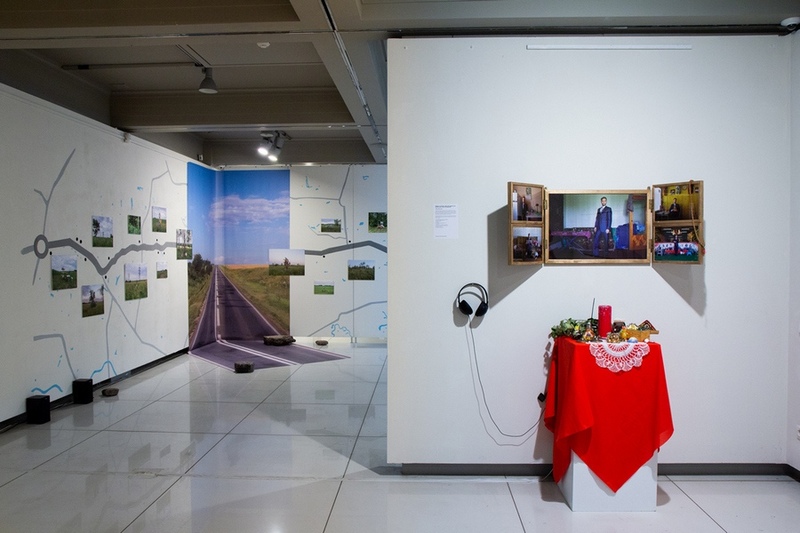
Выставка «Новые художники», галерея Виктория (Самара), 2017
Работы Натальи Шульгиной и Павла Докучаева
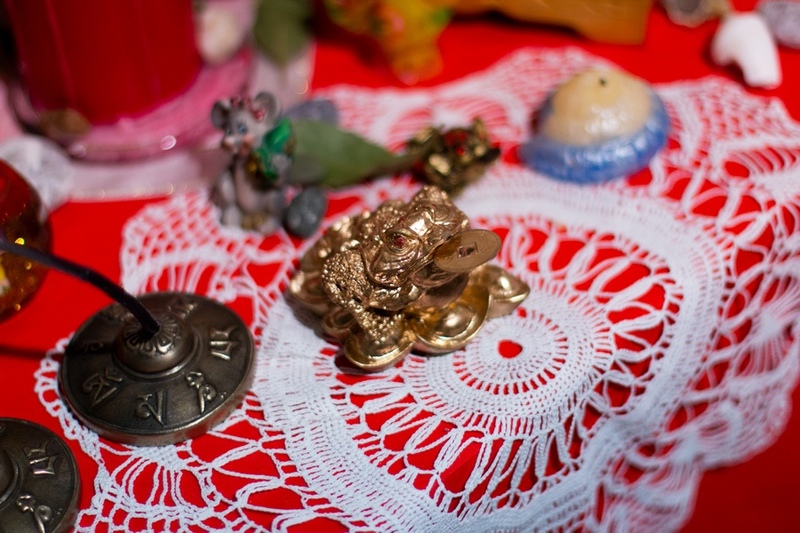
Pavel Dokuchaev — Guy’s Way to Success or Ten Tips How to Become Successful, 2019
“Successful Man” becomes a cult of modern times. On social networks, beefed-out men in expensive suits standing next to cool cars in the backyard of a country house and trading on a way of a successful person, invite me to free seminars, which will inevitably help me to become a high-flyer.
I decided to figure out what success is. I studied dozens of thematic sites and brought out ten tips: following them, I tried to achieve success:
1. Use business-style clothing
2. Do your favorite things
3. Read more
4. Risk
5. Improve your communication skills
6. Work hard
7. Accept any offers
8. Surround yourself with like-minded people
9. Do sports
10. Create an ‘altar of success'
I decided to figure out what success is. I studied dozens of thematic sites and brought out ten tips: following them, I tried to achieve success:
1. Use business-style clothing
2. Do your favorite things
3. Read more
4. Risk
5. Improve your communication skills
6. Work hard
7. Accept any offers
8. Surround yourself with like-minded people
9. Do sports
10. Create an ‘altar of success'
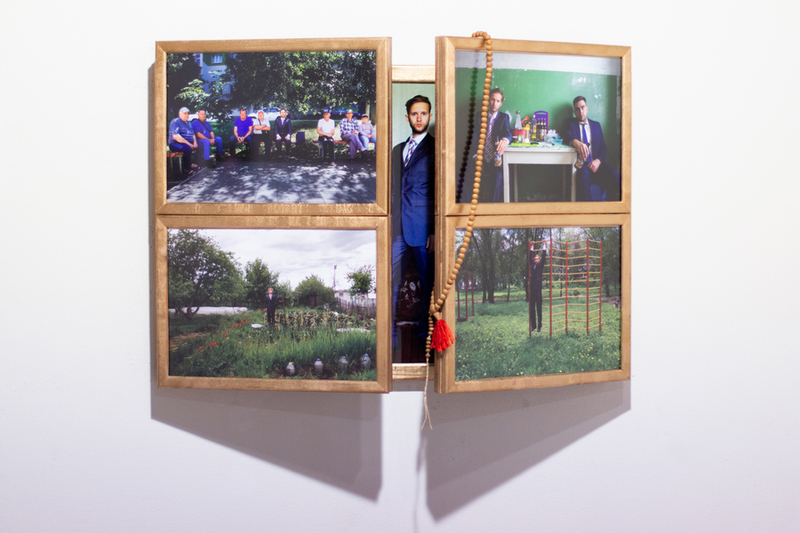
Pavel Dokuchaev — Guy’s Way to Success or Ten Tips How to Become Successful, 2019
“Successful Man” becomes a cult of modern times. On social networks, beefed-out men in expensive suits standing next to cool cars in the backyard of a country house and trading on a way of a successful person, invite me to free seminars, which will inevitably help me to become a high-flyer.
I decided to figure out what success is. I studied dozens of thematic sites and brought out ten tips: following them, I tried to achieve success:
1. Use business-style clothing
2. Do your favorite things
3. Read more
4. Risk
5. Improve your communication skills
6. Work hard
7. Accept any offers
8. Surround yourself with like-minded people
9. Do sports
10. Create an ‘altar of success'
I decided to figure out what success is. I studied dozens of thematic sites and brought out ten tips: following them, I tried to achieve success:
1. Use business-style clothing
2. Do your favorite things
3. Read more
4. Risk
5. Improve your communication skills
6. Work hard
7. Accept any offers
8. Surround yourself with like-minded people
9. Do sports
10. Create an ‘altar of success'
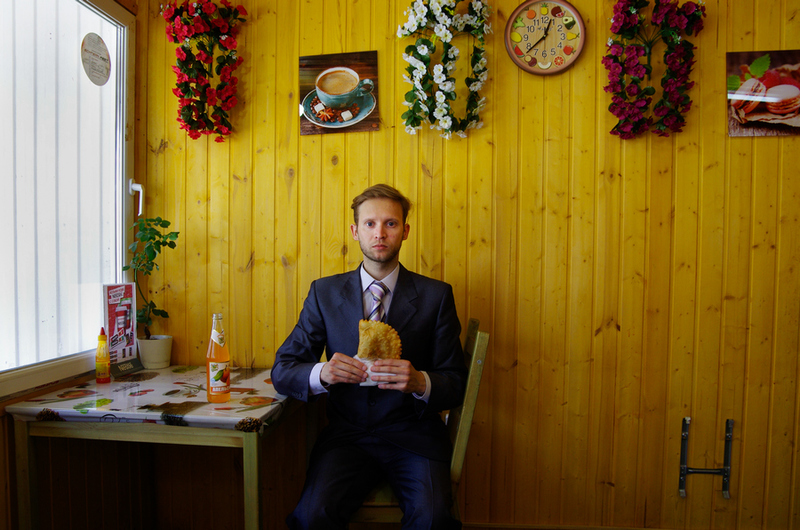
Pavel Dokuchaev — Guy’s Way to Success or Ten Tips How to Become Successful, 2019
“Successful Man” becomes a cult of modern times. On social networks, beefed-out men in expensive suits standing next to cool cars in the backyard of a country house and trading on a way of a successful person, invite me to free seminars, which will inevitably help me to become a high-flyer.
I decided to figure out what success is. I studied dozens of thematic sites and brought out ten tips: following them, I tried to achieve success:
1. Use business-style clothing
2. Do your favorite things
3. Read more
4. Risk
5. Improve your communication skills
6. Work hard
7. Accept any offers
8. Surround yourself with like-minded people
9. Do sports
10. Create an ‘altar of success'
I decided to figure out what success is. I studied dozens of thematic sites and brought out ten tips: following them, I tried to achieve success:
1. Use business-style clothing
2. Do your favorite things
3. Read more
4. Risk
5. Improve your communication skills
6. Work hard
7. Accept any offers
8. Surround yourself with like-minded people
9. Do sports
10. Create an ‘altar of success'
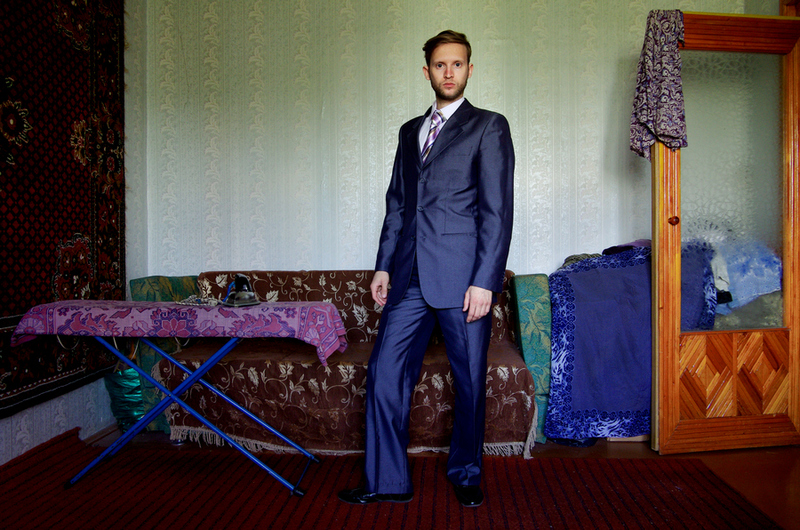
Pavel Dokuchaev — Guy’s Way to Success or Ten Tips How to Become Successful, 2019
“Successful Man” becomes a cult of modern times. On social networks, beefed-out men in expensive suits standing next to cool cars in the backyard of a country house and trading on a way of a successful person, invite me to free seminars, which will inevitably help me to become a high-flyer.
I decided to figure out what success is. I studied dozens of thematic sites and brought out ten tips: following them, I tried to achieve success:
1. Use business-style clothing
2. Do your favorite things
3. Read more
4. Risk
5. Improve your communication skills
6. Work hard
7. Accept any offers
8. Surround yourself with like-minded people
9. Do sports
10. Create an ‘altar of success'
I decided to figure out what success is. I studied dozens of thematic sites and brought out ten tips: following them, I tried to achieve success:
1. Use business-style clothing
2. Do your favorite things
3. Read more
4. Risk
5. Improve your communication skills
6. Work hard
7. Accept any offers
8. Surround yourself with like-minded people
9. Do sports
10. Create an ‘altar of success'
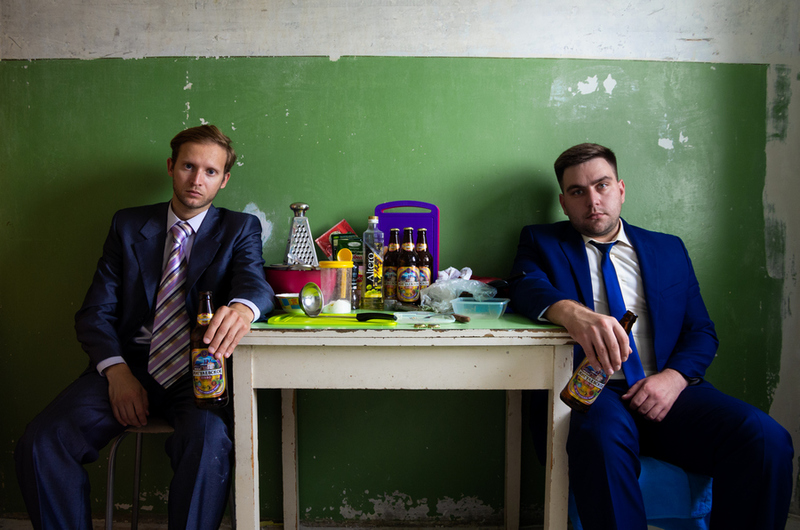
Pavel Dokuchaev — Guy’s Way to Success or Ten Tips How to Become Successful, 2019
“Successful Man” becomes a cult of modern times. On social networks, beefed-out men in expensive suits standing next to cool cars in the backyard of a country house and trading on a way of a successful person, invite me to free seminars, which will inevitably help me to become a high-flyer.
I decided to figure out what success is. I studied dozens of thematic sites and brought out ten tips: following them, I tried to achieve success:
1. Use business-style clothing
2. Do your favorite things
3. Read more
4. Risk
5. Improve your communication skills
6. Work hard
7. Accept any offers
8. Surround yourself with like-minded people
9. Do sports
10. Create an ‘altar of success'
I decided to figure out what success is. I studied dozens of thematic sites and brought out ten tips: following them, I tried to achieve success:
1. Use business-style clothing
2. Do your favorite things
3. Read more
4. Risk
5. Improve your communication skills
6. Work hard
7. Accept any offers
8. Surround yourself with like-minded people
9. Do sports
10. Create an ‘altar of success'
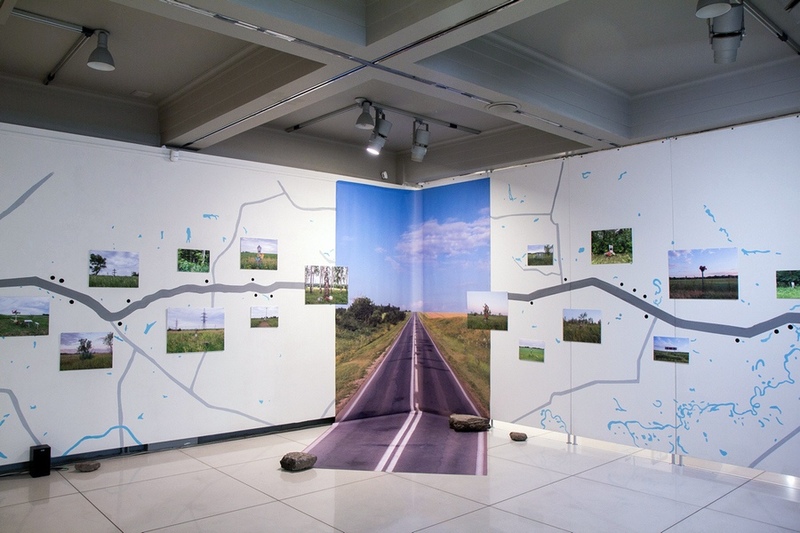
Natalya Shulgina — 36K-277, 2019
36K-277 is the typical regional level highway. This road connects my home with my parents' house. And along the way the number of roadside memorials or cenotaphs (erected in memory of people who died in car accidents) increases every year.
Sometimes I don’t want to notice these memorials and refuse even to think about death. But no matter how hard I try to ignore cenotaphs — so and the facts of death of people on this highway -it is impossible.
The grief at the sudden death on the road becomes so huge that it echoes from roadside memorials and reaches large number of people through times.
Working on the 36K-277 project helps me to get in touch with my own fear of death and get through the pain of loss.
Sometimes I don’t want to notice these memorials and refuse even to think about death. But no matter how hard I try to ignore cenotaphs — so and the facts of death of people on this highway -it is impossible.
The grief at the sudden death on the road becomes so huge that it echoes from roadside memorials and reaches large number of people through times.
Working on the 36K-277 project helps me to get in touch with my own fear of death and get through the pain of loss.
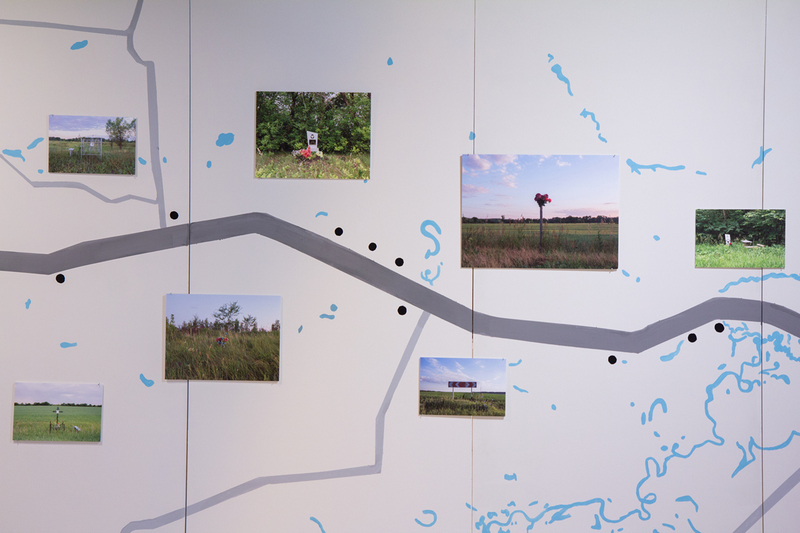
Natalya Shulgina — 36K-277, 2019
36K-277 is the typical regional level highway. This road connects my home with my parents' house. And along the way the number of roadside memorials or cenotaphs (erected in memory of people who died in car accidents) increases every year.
Sometimes I don’t want to notice these memorials and refuse even to think about death. But no matter how hard I try to ignore cenotaphs — so and the facts of death of people on this highway -it is impossible.
The grief at the sudden death on the road becomes so huge that it echoes from roadside memorials and reaches large number of people through times.
Working on the 36K-277 project helps me to get in touch with my own fear of death and get through the pain of loss.
Sometimes I don’t want to notice these memorials and refuse even to think about death. But no matter how hard I try to ignore cenotaphs — so and the facts of death of people on this highway -it is impossible.
The grief at the sudden death on the road becomes so huge that it echoes from roadside memorials and reaches large number of people through times.
Working on the 36K-277 project helps me to get in touch with my own fear of death and get through the pain of loss.
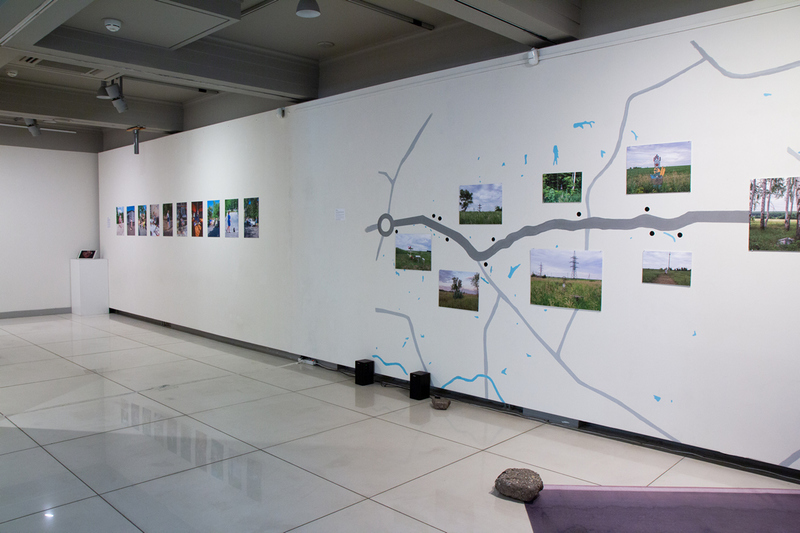
Natalya Shulgina — 36K-277, 2019
36K-277 is the typical regional level highway. This road connects my home with my parents' house. And along the way the number of roadside memorials or cenotaphs (erected in memory of people who died in car accidents) increases every year.
Sometimes I don’t want to notice these memorials and refuse even to think about death. But no matter how hard I try to ignore cenotaphs — so and the facts of death of people on this highway -it is impossible.
The grief at the sudden death on the road becomes so huge that it echoes from roadside memorials and reaches large number of people through times.
Working on the 36K-277 project helps me to get in touch with my own fear of death and get through the pain of loss.
Sometimes I don’t want to notice these memorials and refuse even to think about death. But no matter how hard I try to ignore cenotaphs — so and the facts of death of people on this highway -it is impossible.
The grief at the sudden death on the road becomes so huge that it echoes from roadside memorials and reaches large number of people through times.
Working on the 36K-277 project helps me to get in touch with my own fear of death and get through the pain of loss.
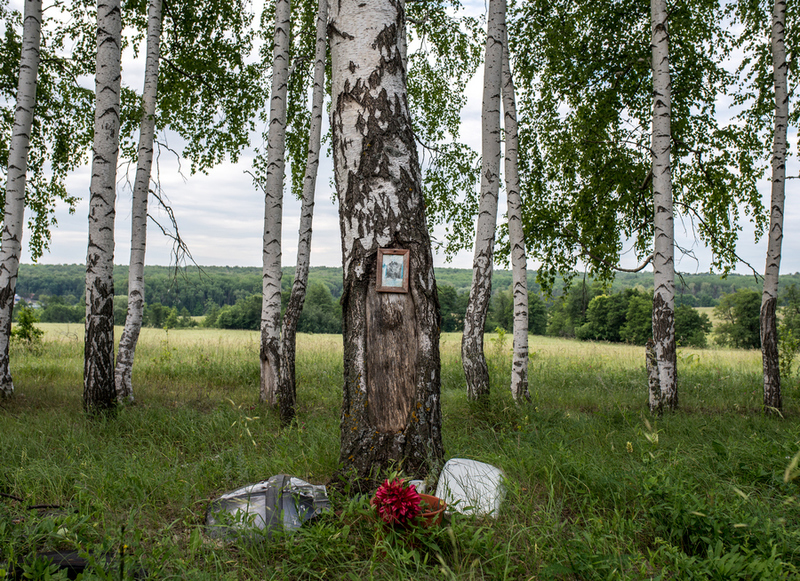
Natalya Shulgina — 36K-277, 2019
36K-277 is the typical regional level highway. This road connects my home with my parents' house. And along the way the number of roadside memorials or cenotaphs (erected in memory of people who died in car accidents) increases every year.
Sometimes I don’t want to notice these memorials and refuse even to think about death. But no matter how hard I try to ignore cenotaphs — so and the facts of death of people on this highway -it is impossible.
The grief at the sudden death on the road becomes so huge that it echoes from roadside memorials and reaches large number of people through times.
Working on the 36K-277 project helps me to get in touch with my own fear of death and get through the pain of loss.
Sometimes I don’t want to notice these memorials and refuse even to think about death. But no matter how hard I try to ignore cenotaphs — so and the facts of death of people on this highway -it is impossible.
The grief at the sudden death on the road becomes so huge that it echoes from roadside memorials and reaches large number of people through times.
Working on the 36K-277 project helps me to get in touch with my own fear of death and get through the pain of loss.
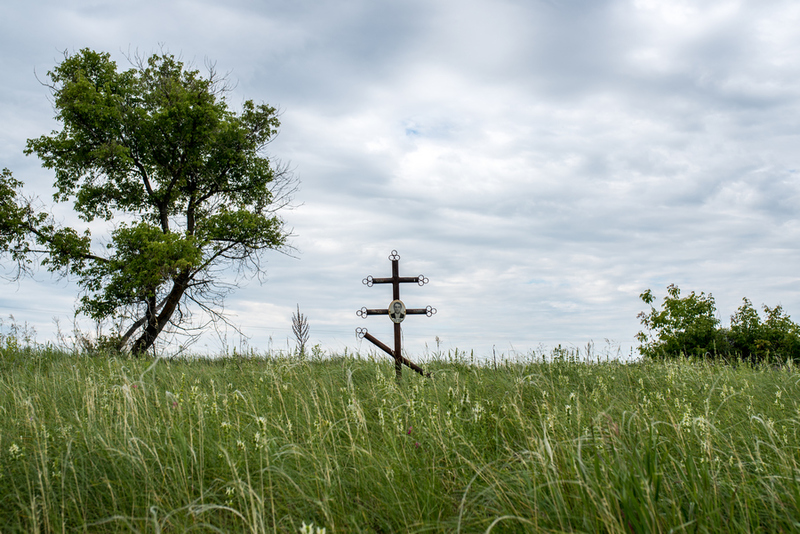
Natalya Shulgina — 36K-277, 2019
36K-277 is the typical regional level highway. This road connects my home with my parents' house. And along the way the number of roadside memorials or cenotaphs (erected in memory of people who died in car accidents) increases every year.
Sometimes I don’t want to notice these memorials and refuse even to think about death. But no matter how hard I try to ignore cenotaphs — so and the facts of death of people on this highway -it is impossible.
The grief at the sudden death on the road becomes so huge that it echoes from roadside memorials and reaches large number of people through times.
Working on the 36K-277 project helps me to get in touch with my own fear of death and get through the pain of loss.
Sometimes I don’t want to notice these memorials and refuse even to think about death. But no matter how hard I try to ignore cenotaphs — so and the facts of death of people on this highway -it is impossible.
The grief at the sudden death on the road becomes so huge that it echoes from roadside memorials and reaches large number of people through times.
Working on the 36K-277 project helps me to get in touch with my own fear of death and get through the pain of loss.
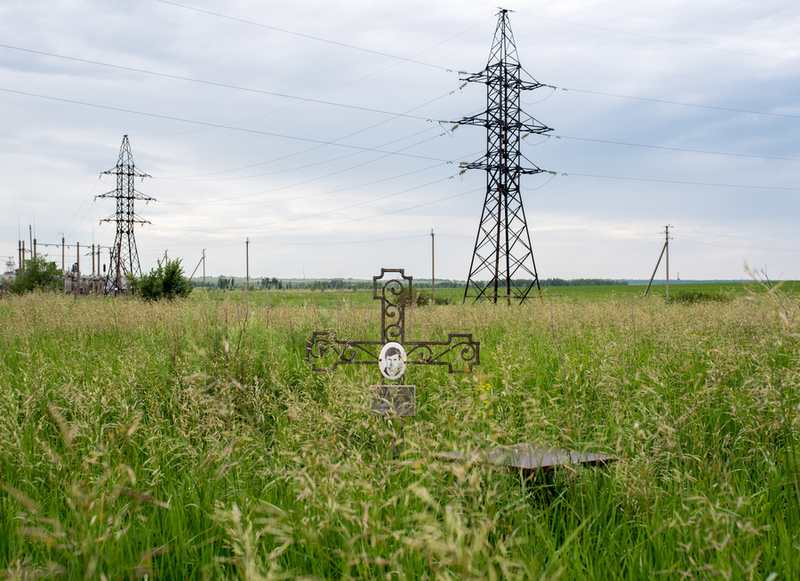
Natalya Shulgina — 36K-277, 2019
36K-277 is the typical regional level highway. This road connects my home with my parents' house. And along the way the number of roadside memorials or cenotaphs (erected in memory of people who died in car accidents) increases every year.
Sometimes I don’t want to notice these memorials and refuse even to think about death. But no matter how hard I try to ignore cenotaphs — so and the facts of death of people on this highway -it is impossible.
The grief at the sudden death on the road becomes so huge that it echoes from roadside memorials and reaches large number of people through times.
Working on the 36K-277 project helps me to get in touch with my own fear of death and get through the pain of loss.
Sometimes I don’t want to notice these memorials and refuse even to think about death. But no matter how hard I try to ignore cenotaphs — so and the facts of death of people on this highway -it is impossible.
The grief at the sudden death on the road becomes so huge that it echoes from roadside memorials and reaches large number of people through times.
Working on the 36K-277 project helps me to get in touch with my own fear of death and get through the pain of loss.
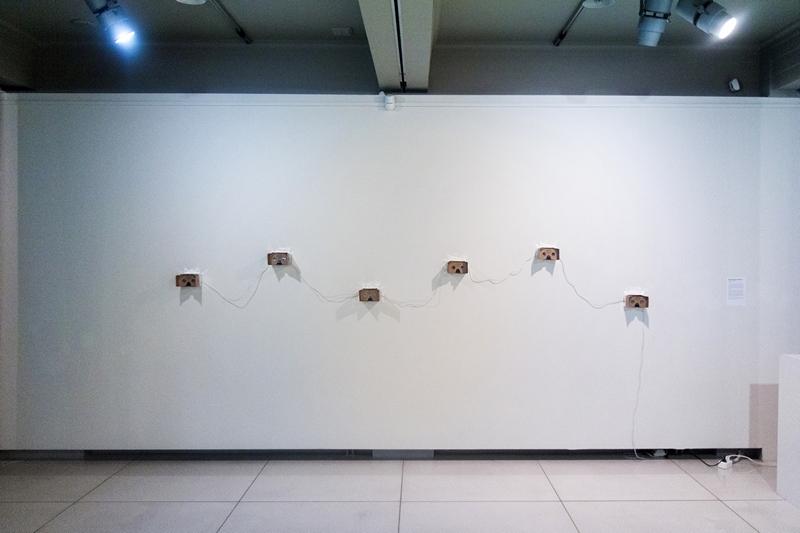
Проект Юлии Мишиной
Выставка «Новые художники», галерея Виктория (Самара), август 2017 года
Фото: Кристина Сырчикова
Описание проекта
«Насколько комфортно жить в среде, созданной человеком?
По теории физиолога В. А. Филина естественная видимая среда находится в полном соответствии с физиологическими нормами зрения, так как природа „лепила“ глаз „под себя“. Искусственная среда часто противоречит законам зрительного восприятия. Бетонные заборы, кирпичные торцы зданий и стеклянные фасады создают гомогенную среду, где глазу не за что зацепиться.
Современная архитектура зачастую создает в городе агрессивную видимую среду. Это свойственно, например, многоэтажным зданиям, где на огромной стене находится много окон. Глаз легко теряет тот объект, который он только что фиксировал. В таких условиях нарушается способность видеть предметы объемно: чтобы увидеть 3D-картинку, нужно смотреть двумя глазами на один объект одновременно. В агрессивной среде это сделать сложно, глаза быстро устают, появляется раздражение и дискомфорт.
Неблагоприятная визуальная среда является одним из факторов развития психических заболеваний, близорукости и снижения адаптации».
Фото: Кристина Сырчикова
Описание проекта
«Насколько комфортно жить в среде, созданной человеком?
По теории физиолога В. А. Филина естественная видимая среда находится в полном соответствии с физиологическими нормами зрения, так как природа „лепила“ глаз „под себя“. Искусственная среда часто противоречит законам зрительного восприятия. Бетонные заборы, кирпичные торцы зданий и стеклянные фасады создают гомогенную среду, где глазу не за что зацепиться.
Современная архитектура зачастую создает в городе агрессивную видимую среду. Это свойственно, например, многоэтажным зданиям, где на огромной стене находится много окон. Глаз легко теряет тот объект, который он только что фиксировал. В таких условиях нарушается способность видеть предметы объемно: чтобы увидеть 3D-картинку, нужно смотреть двумя глазами на один объект одновременно. В агрессивной среде это сделать сложно, глаза быстро устают, появляется раздражение и дискомфорт.
Неблагоприятная визуальная среда является одним из факторов развития психических заболеваний, близорукости и снижения адаптации».
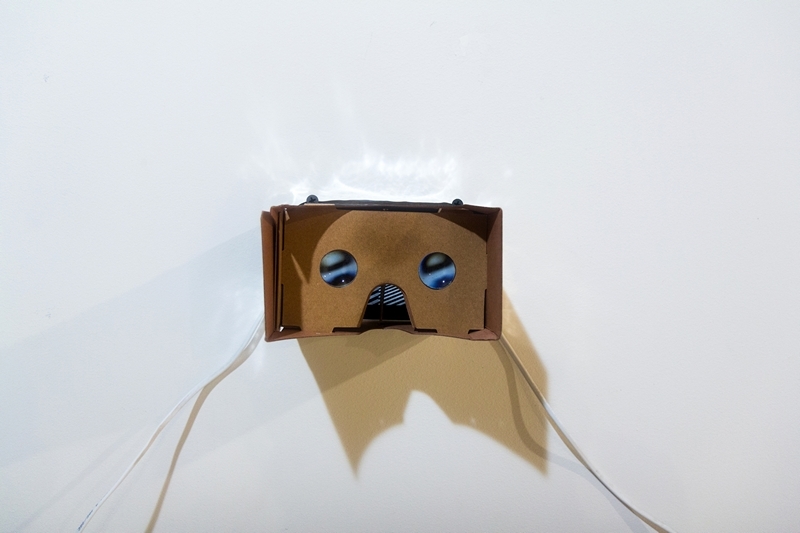
Проект Юлии Мишиной
Выставка «Новые художники», галерея Виктория (Самара), август 2017 года
Фото: Кристина Сырчикова
Описание проекта
«Насколько комфортно жить в среде, созданной человеком?
По теории физиолога В. А. Филина естественная видимая среда находится в полном соответствии с физиологическими нормами зрения, так как природа „лепила“ глаз „под себя“. Искусственная среда часто противоречит законам зрительного восприятия. Бетонные заборы, кирпичные торцы зданий и стеклянные фасады создают гомогенную среду, где глазу не за что зацепиться.
Современная архитектура зачастую создает в городе агрессивную видимую среду. Это свойственно, например, многоэтажным зданиям, где на огромной стене находится много окон. Глаз легко теряет тот объект, который он только что фиксировал. В таких условиях нарушается способность видеть предметы объемно: чтобы увидеть 3D-картинку, нужно смотреть двумя глазами на один объект одновременно. В агрессивной среде это сделать сложно, глаза быстро устают, появляется раздражение и дискомфорт.
Неблагоприятная визуальная среда является одним из факторов развития психических заболеваний, близорукости и снижения адаптации».
Фото: Кристина Сырчикова
Описание проекта
«Насколько комфортно жить в среде, созданной человеком?
По теории физиолога В. А. Филина естественная видимая среда находится в полном соответствии с физиологическими нормами зрения, так как природа „лепила“ глаз „под себя“. Искусственная среда часто противоречит законам зрительного восприятия. Бетонные заборы, кирпичные торцы зданий и стеклянные фасады создают гомогенную среду, где глазу не за что зацепиться.
Современная архитектура зачастую создает в городе агрессивную видимую среду. Это свойственно, например, многоэтажным зданиям, где на огромной стене находится много окон. Глаз легко теряет тот объект, который он только что фиксировал. В таких условиях нарушается способность видеть предметы объемно: чтобы увидеть 3D-картинку, нужно смотреть двумя глазами на один объект одновременно. В агрессивной среде это сделать сложно, глаза быстро устают, появляется раздражение и дискомфорт.
Неблагоприятная визуальная среда является одним из факторов развития психических заболеваний, близорукости и снижения адаптации».
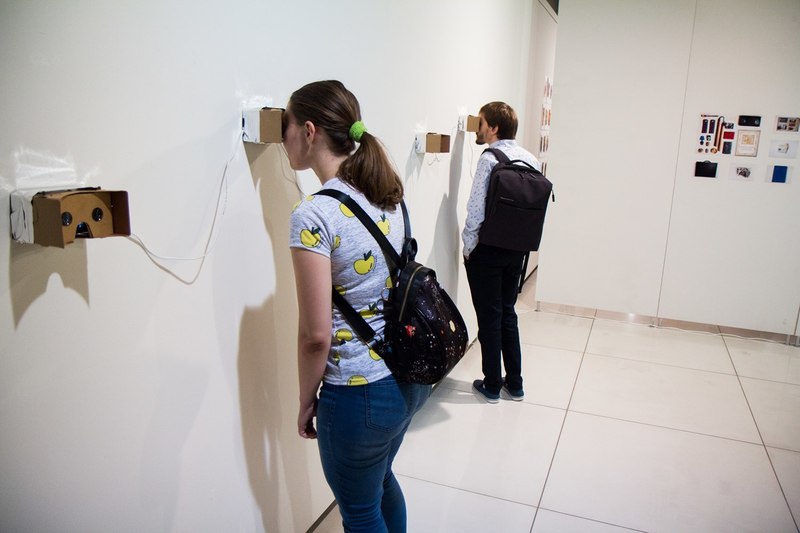
Проект Юлии Мишиной
Выставка «Новые художники», галерея Виктория (Самара), август 2017 года
Фото: Кристина Сырчикова
Описание проекта
«Насколько комфортно жить в среде, созданной человеком?
По теории физиолога В. А. Филина естественная видимая среда находится в полном соответствии с физиологическими нормами зрения, так как природа „лепила“ глаз „под себя“. Искусственная среда часто противоречит законам зрительного восприятия. Бетонные заборы, кирпичные торцы зданий и стеклянные фасады создают гомогенную среду, где глазу не за что зацепиться.
Современная архитектура зачастую создает в городе агрессивную видимую среду. Это свойственно, например, многоэтажным зданиям, где на огромной стене находится много окон. Глаз легко теряет тот объект, который он только что фиксировал. В таких условиях нарушается способность видеть предметы объемно: чтобы увидеть 3D-картинку, нужно смотреть двумя глазами на один объект одновременно. В агрессивной среде это сделать сложно, глаза быстро устают, появляется раздражение и дискомфорт.
Неблагоприятная визуальная среда является одним из факторов развития психических заболеваний, близорукости и снижения адаптации».
Фото: Кристина Сырчикова
Описание проекта
«Насколько комфортно жить в среде, созданной человеком?
По теории физиолога В. А. Филина естественная видимая среда находится в полном соответствии с физиологическими нормами зрения, так как природа „лепила“ глаз „под себя“. Искусственная среда часто противоречит законам зрительного восприятия. Бетонные заборы, кирпичные торцы зданий и стеклянные фасады создают гомогенную среду, где глазу не за что зацепиться.
Современная архитектура зачастую создает в городе агрессивную видимую среду. Это свойственно, например, многоэтажным зданиям, где на огромной стене находится много окон. Глаз легко теряет тот объект, который он только что фиксировал. В таких условиях нарушается способность видеть предметы объемно: чтобы увидеть 3D-картинку, нужно смотреть двумя глазами на один объект одновременно. В агрессивной среде это сделать сложно, глаза быстро устают, появляется раздражение и дискомфорт.
Неблагоприятная визуальная среда является одним из факторов развития психических заболеваний, близорукости и снижения адаптации».
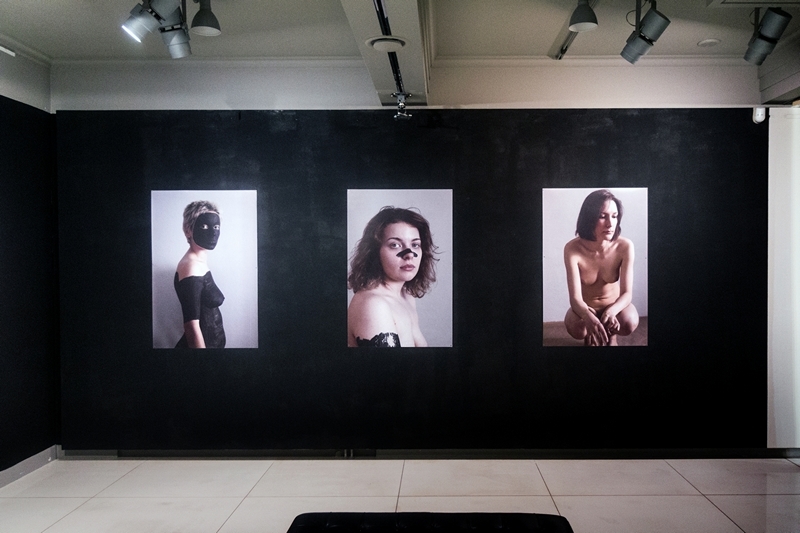
Lubov Rakshina — (Non)acceptance, 2017
I remember my adolescent years as the time full of shame towards myself because I sweated excessively and my hair was growing everywhere on my body. Noone ever told me this was normal, so I thought if I was born a woman, I was obliged to hide the natural processes of my body. When I was 13, some boy on the street told me that I had hairy legs. I had never thought about it before that encounter, and this was the time I got acquainted with the razor and cuts from it. I shaved my legs in fear to miss at least one of these hairs, I was afraid of people noticing them. My chubby cheeks were compared to the cheeks of a hamster, but I could not fix this part of my body as easily as getting rid of unwanted hairs. I thought of my own body as a cage, tried to separate myself from it and didn't ever expect this feeling to vanish.
I'm 21 now and it has been only 2 years since I began the way of accepting myself. It takes a lot of effort not to compare myself with other people because this was what I was told to do from early childhood. Today standards of beauty are forced on everyone through magazines, television, relatives and friends. We compare ourselves with photoshopped pictures and this is what undermines our self-esteem most. As we grow older, the industry of appearance demands more: we have to resort to body care products; tattoos to hide flaws our bodies have, plastic surgery to change those parts we don't like or hide them completely. I asked these women to undress and cover their bodies with black paint in the places they consider to be imperfect. Our complexes and imperfections are something that we are not used to talking about because this makes us vulnerable. Black takes us to the shadows of things we would like to hide. At night, I feel more confident and relaxed because I know that black will hide everything I want.
I'm 21 now and it has been only 2 years since I began the way of accepting myself. It takes a lot of effort not to compare myself with other people because this was what I was told to do from early childhood. Today standards of beauty are forced on everyone through magazines, television, relatives and friends. We compare ourselves with photoshopped pictures and this is what undermines our self-esteem most. As we grow older, the industry of appearance demands more: we have to resort to body care products; tattoos to hide flaws our bodies have, plastic surgery to change those parts we don't like or hide them completely. I asked these women to undress and cover their bodies with black paint in the places they consider to be imperfect. Our complexes and imperfections are something that we are not used to talking about because this makes us vulnerable. Black takes us to the shadows of things we would like to hide. At night, I feel more confident and relaxed because I know that black will hide everything I want.
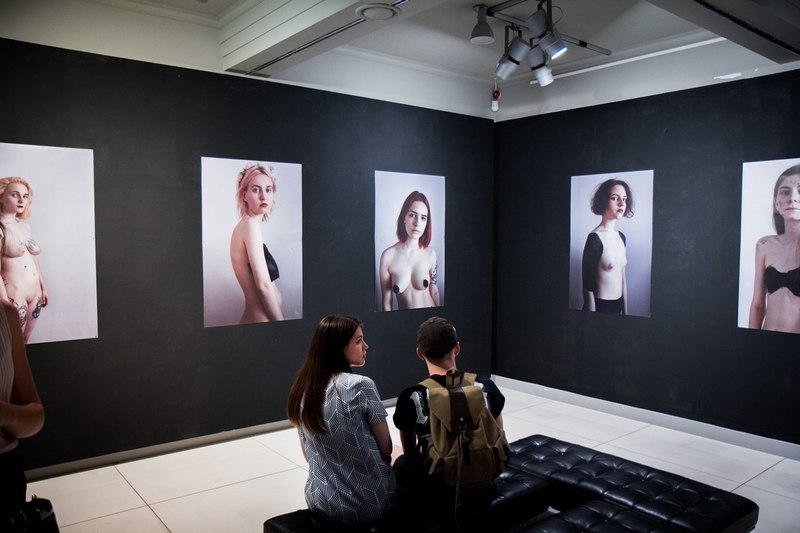
Lubov Rakshina — (Non)acceptance, 2017
I remember my adolescent years as the time full of shame towards myself because I sweated excessively and my hair was growing everywhere on my body. Noone ever told me this was normal, so I thought if I was born a woman, I was obliged to hide the natural processes of my body. When I was 13, some boy on the street told me that I had hairy legs. I had never thought about it before that encounter, and this was the time I got acquainted with the razor and cuts from it. I shaved my legs in fear to miss at least one of these hairs, I was afraid of people noticing them. My chubby cheeks were compared to the cheeks of a hamster, but I could not fix this part of my body as easily as getting rid of unwanted hairs. I thought of my own body as a cage, tried to separate myself from it and didn't ever expect this feeling to vanish.
I'm 21 now and it has been only 2 years since I began the way of accepting myself. It takes a lot of effort not to compare myself with other people because this was what I was told to do from early childhood. Today standards of beauty are forced on everyone through magazines, television, relatives and friends. We compare ourselves with photoshopped pictures and this is what undermines our self-esteem most. As we grow older, the industry of appearance demands more: we have to resort to body care products; tattoos to hide flaws our bodies have, plastic surgery to change those parts we don't like or hide them completely. I asked these women to undress and cover their bodies with black paint in the places they consider to be imperfect. Our complexes and imperfections are something that we are not used to talking about because this makes us vulnerable. Black takes us to the shadows of things we would like to hide. At night, I feel more confident and relaxed because I know that black will hide everything I want.
I'm 21 now and it has been only 2 years since I began the way of accepting myself. It takes a lot of effort not to compare myself with other people because this was what I was told to do from early childhood. Today standards of beauty are forced on everyone through magazines, television, relatives and friends. We compare ourselves with photoshopped pictures and this is what undermines our self-esteem most. As we grow older, the industry of appearance demands more: we have to resort to body care products; tattoos to hide flaws our bodies have, plastic surgery to change those parts we don't like or hide them completely. I asked these women to undress and cover their bodies with black paint in the places they consider to be imperfect. Our complexes and imperfections are something that we are not used to talking about because this makes us vulnerable. Black takes us to the shadows of things we would like to hide. At night, I feel more confident and relaxed because I know that black will hide everything I want.
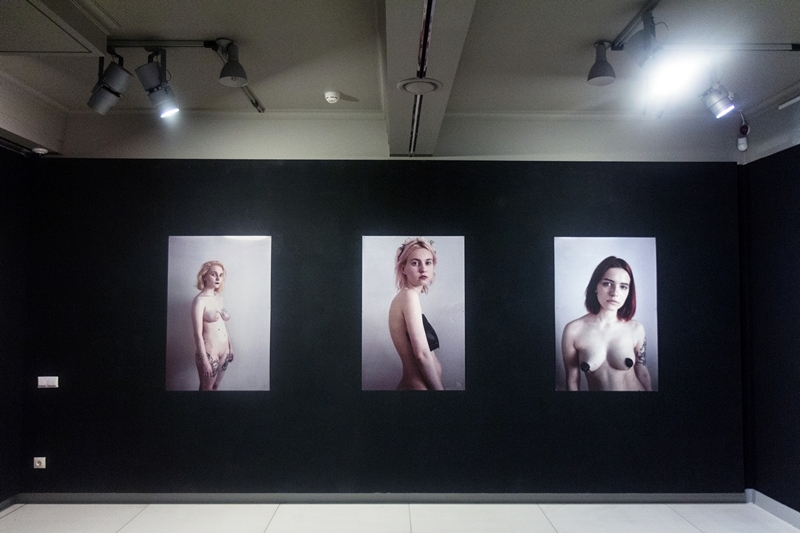
Lubov Rakshina — (Non)acceptance, 2017
I remember my adolescent years as the time full of shame towards myself because I sweated excessively and my hair was growing everywhere on my body. Noone ever told me this was normal, so I thought if I was born a woman, I was obliged to hide the natural processes of my body. When I was 13, some boy on the street told me that I had hairy legs. I had never thought about it before that encounter, and this was the time I got acquainted with the razor and cuts from it. I shaved my legs in fear to miss at least one of these hairs, I was afraid of people noticing them. My chubby cheeks were compared to the cheeks of a hamster, but I could not fix this part of my body as easily as getting rid of unwanted hairs. I thought of my own body as a cage, tried to separate myself from it and didn't ever expect this feeling to vanish.
I'm 21 now and it has been only 2 years since I began the way of accepting myself. It takes a lot of effort not to compare myself with other people because this was what I was told to do from early childhood. Today standards of beauty are forced on everyone through magazines, television, relatives and friends. We compare ourselves with photoshopped pictures and this is what undermines our self-esteem most. As we grow older, the industry of appearance demands more: we have to resort to body care products; tattoos to hide flaws our bodies have, plastic surgery to change those parts we don't like or hide them completely. I asked these women to undress and cover their bodies with black paint in the places they consider to be imperfect. Our complexes and imperfections are something that we are not used to talking about because this makes us vulnerable. Black takes us to the shadows of things we would like to hide. At night, I feel more confident and relaxed because I know that black will hide everything I want.
I'm 21 now and it has been only 2 years since I began the way of accepting myself. It takes a lot of effort not to compare myself with other people because this was what I was told to do from early childhood. Today standards of beauty are forced on everyone through magazines, television, relatives and friends. We compare ourselves with photoshopped pictures and this is what undermines our self-esteem most. As we grow older, the industry of appearance demands more: we have to resort to body care products; tattoos to hide flaws our bodies have, plastic surgery to change those parts we don't like or hide them completely. I asked these women to undress and cover their bodies with black paint in the places they consider to be imperfect. Our complexes and imperfections are something that we are not used to talking about because this makes us vulnerable. Black takes us to the shadows of things we would like to hide. At night, I feel more confident and relaxed because I know that black will hide everything I want.
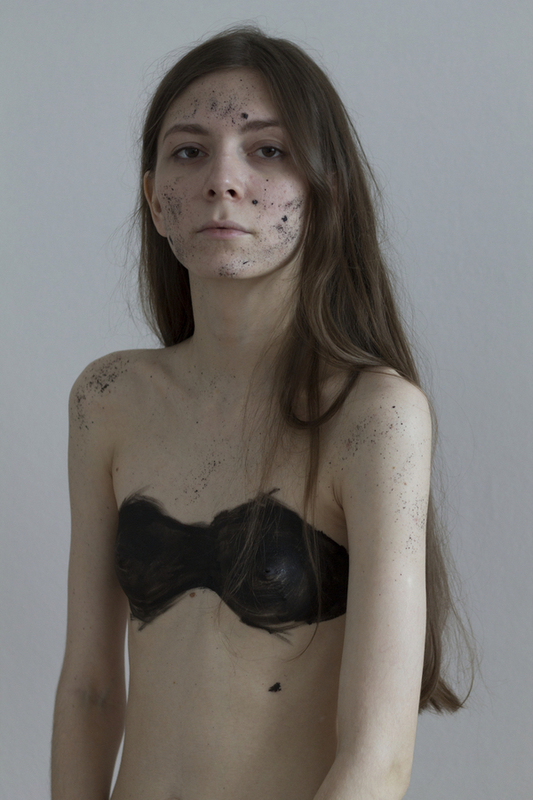
Lubov Rakshina — (Non)acceptance, 2017
I remember my adolescent years as the time full of shame towards myself because I sweated excessively and my hair was growing everywhere on my body. Noone ever told me this was normal, so I thought if I was born a woman, I was obliged to hide the natural processes of my body. When I was 13, some boy on the street told me that I had hairy legs. I had never thought about it before that encounter, and this was the time I got acquainted with the razor and cuts from it. I shaved my legs in fear to miss at least one of these hairs, I was afraid of people noticing them. My chubby cheeks were compared to the cheeks of a hamster, but I could not fix this part of my body as easily as getting rid of unwanted hairs. I thought of my own body as a cage, tried to separate myself from it and didn't ever expect this feeling to vanish.
I'm 21 now and it has been only 2 years since I began the way of accepting myself. It takes a lot of effort not to compare myself with other people because this was what I was told to do from early childhood. Today standards of beauty are forced on everyone through magazines, television, relatives and friends. We compare ourselves with photoshopped pictures and this is what undermines our self-esteem most. As we grow older, the industry of appearance demands more: we have to resort to body care products; tattoos to hide flaws our bodies have, plastic surgery to change those parts we don't like or hide them completely. I asked these women to undress and cover their bodies with black paint in the places they consider to be imperfect. Our complexes and imperfections are something that we are not used to talking about because this makes us vulnerable. Black takes us to the shadows of things we would like to hide. At night, I feel more confident and relaxed because I know that black will hide everything I want.
I'm 21 now and it has been only 2 years since I began the way of accepting myself. It takes a lot of effort not to compare myself with other people because this was what I was told to do from early childhood. Today standards of beauty are forced on everyone through magazines, television, relatives and friends. We compare ourselves with photoshopped pictures and this is what undermines our self-esteem most. As we grow older, the industry of appearance demands more: we have to resort to body care products; tattoos to hide flaws our bodies have, plastic surgery to change those parts we don't like or hide them completely. I asked these women to undress and cover their bodies with black paint in the places they consider to be imperfect. Our complexes and imperfections are something that we are not used to talking about because this makes us vulnerable. Black takes us to the shadows of things we would like to hide. At night, I feel more confident and relaxed because I know that black will hide everything I want.
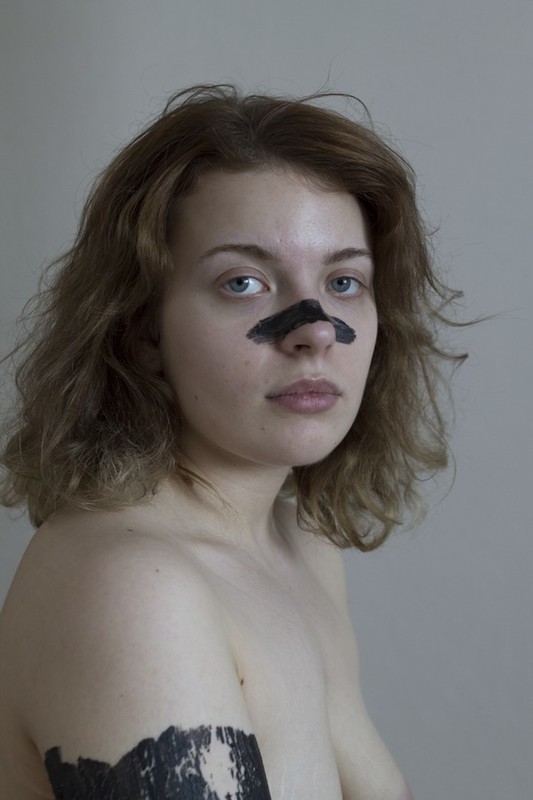
Lubov Rakshina — (Non)acceptance, 2017
I remember my adolescent years as the time full of shame towards myself because I sweated excessively and my hair was growing everywhere on my body. Noone ever told me this was normal, so I thought if I was born a woman, I was obliged to hide the natural processes of my body. When I was 13, some boy on the street told me that I had hairy legs. I had never thought about it before that encounter, and this was the time I got acquainted with the razor and cuts from it. I shaved my legs in fear to miss at least one of these hairs, I was afraid of people noticing them. My chubby cheeks were compared to the cheeks of a hamster, but I could not fix this part of my body as easily as getting rid of unwanted hairs. I thought of my own body as a cage, tried to separate myself from it and didn't ever expect this feeling to vanish.
I'm 21 now and it has been only 2 years since I began the way of accepting myself. It takes a lot of effort not to compare myself with other people because this was what I was told to do from early childhood. Today standards of beauty are forced on everyone through magazines, television, relatives and friends. We compare ourselves with photoshopped pictures and this is what undermines our self-esteem most. As we grow older, the industry of appearance demands more: we have to resort to body care products; tattoos to hide flaws our bodies have, plastic surgery to change those parts we don't like or hide them completely. I asked these women to undress and cover their bodies with black paint in the places they consider to be imperfect. Our complexes and imperfections are something that we are not used to talking about because this makes us vulnerable. Black takes us to the shadows of things we would like to hide. At night, I feel more confident and relaxed because I know that black will hide everything I want.
I'm 21 now and it has been only 2 years since I began the way of accepting myself. It takes a lot of effort not to compare myself with other people because this was what I was told to do from early childhood. Today standards of beauty are forced on everyone through magazines, television, relatives and friends. We compare ourselves with photoshopped pictures and this is what undermines our self-esteem most. As we grow older, the industry of appearance demands more: we have to resort to body care products; tattoos to hide flaws our bodies have, plastic surgery to change those parts we don't like or hide them completely. I asked these women to undress and cover their bodies with black paint in the places they consider to be imperfect. Our complexes and imperfections are something that we are not used to talking about because this makes us vulnerable. Black takes us to the shadows of things we would like to hide. At night, I feel more confident and relaxed because I know that black will hide everything I want.

Lubov Rakshina — (Non)acceptance, 2017
I remember my adolescent years as the time full of shame towards myself because I sweated excessively and my hair was growing everywhere on my body. Noone ever told me this was normal, so I thought if I was born a woman, I was obliged to hide the natural processes of my body. When I was 13, some boy on the street told me that I had hairy legs. I had never thought about it before that encounter, and this was the time I got acquainted with the razor and cuts from it. I shaved my legs in fear to miss at least one of these hairs, I was afraid of people noticing them. My chubby cheeks were compared to the cheeks of a hamster, but I could not fix this part of my body as easily as getting rid of unwanted hairs. I thought of my own body as a cage, tried to separate myself from it and didn't ever expect this feeling to vanish.
I'm 21 now and it has been only 2 years since I began the way of accepting myself. It takes a lot of effort not to compare myself with other people because this was what I was told to do from early childhood. Today standards of beauty are forced on everyone through magazines, television, relatives and friends. We compare ourselves with photoshopped pictures and this is what undermines our self-esteem most. As we grow older, the industry of appearance demands more: we have to resort to body care products; tattoos to hide flaws our bodies have, plastic surgery to change those parts we don't like or hide them completely. I asked these women to undress and cover their bodies with black paint in the places they consider to be imperfect. Our complexes and imperfections are something that we are not used to talking about because this makes us vulnerable. Black takes us to the shadows of things we would like to hide. At night, I feel more confident and relaxed because I know that black will hide everything I want.
I'm 21 now and it has been only 2 years since I began the way of accepting myself. It takes a lot of effort not to compare myself with other people because this was what I was told to do from early childhood. Today standards of beauty are forced on everyone through magazines, television, relatives and friends. We compare ourselves with photoshopped pictures and this is what undermines our self-esteem most. As we grow older, the industry of appearance demands more: we have to resort to body care products; tattoos to hide flaws our bodies have, plastic surgery to change those parts we don't like or hide them completely. I asked these women to undress and cover their bodies with black paint in the places they consider to be imperfect. Our complexes and imperfections are something that we are not used to talking about because this makes us vulnerable. Black takes us to the shadows of things we would like to hide. At night, I feel more confident and relaxed because I know that black will hide everything I want.
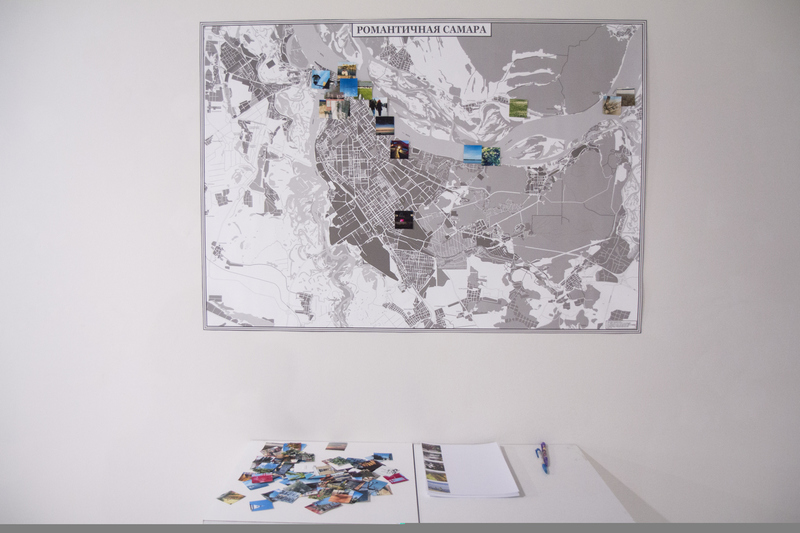
Проект Дали Бучионите
Даля Бучионите родилась и выросла в Литве. После переезда в российский промышленный город-миллионник она обнаружила, что в нём нет мест для прогулок и создания романтического настроения. Её заинтересовал опыт других жителей города и она предложила посетителям выставки отметить на карте места, где у них были романтические переживания. И записать свою историю.
Выставка «Новые художники», галерея Виктория (Самара), август 2018 года
Фото: Кристина Сырчикова
Выставка «Новые художники», галерея Виктория (Самара), август 2018 года
Фото: Кристина Сырчикова
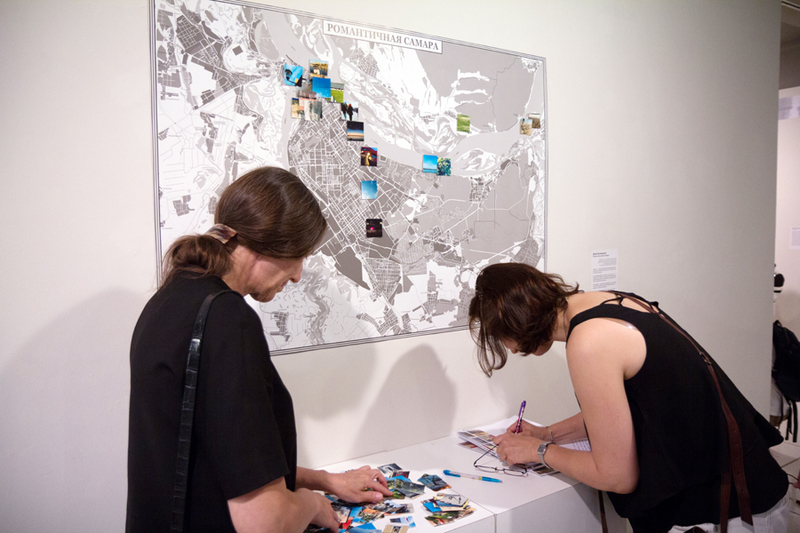
Проект Дали Бучионите
Даля Бучионите родилась и выросла в Литве. После переезда в российский промышленный город-миллионник она обнаружила, что в нём нет мест для прогулок и создания романтического настроения. Её заинтересовал опыт других жителей города и она предложила посетителям выставки отметить на карте места, где у них были романтические переживания. И записать свою историю.
Выставка «Новые художники», галерея Виктория (Самара), август 2018 года
Фото: Кристина Сырчикова
Выставка «Новые художники», галерея Виктория (Самара), август 2018 года
Фото: Кристина Сырчикова
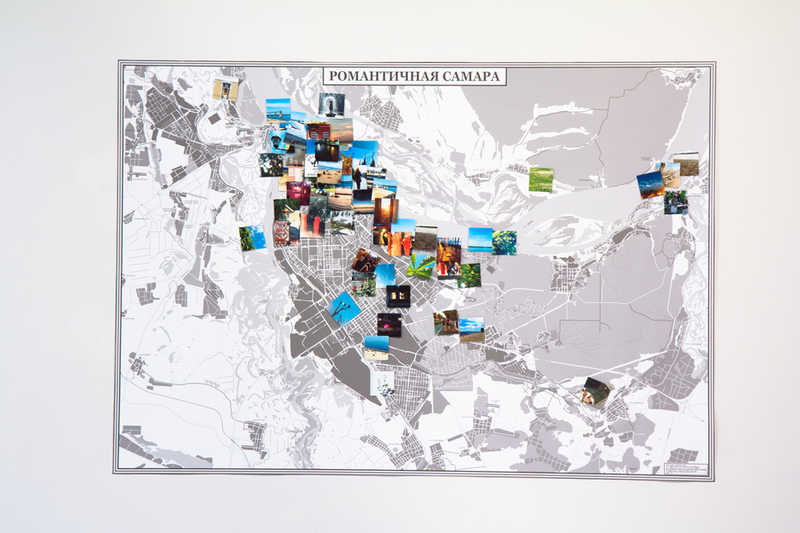
Проект Дали Бучионите
Даля Бучионите родилась и выросла в Литве. После переезда в российский промышленный город-миллионник она обнаружила, что в нём нет мест для прогулок и создания романтического настроения. Её заинтересовал опыт других жителей города и она предложила посетителям выставки отметить на карте места, где у них были романтические переживания. И записать свою историю.
Выставка «Новые художники», галерея Виктория (Самара), август 2018 года
Фото: Кристина Сырчикова
Выставка «Новые художники», галерея Виктория (Самара), август 2018 года
Фото: Кристина Сырчикова
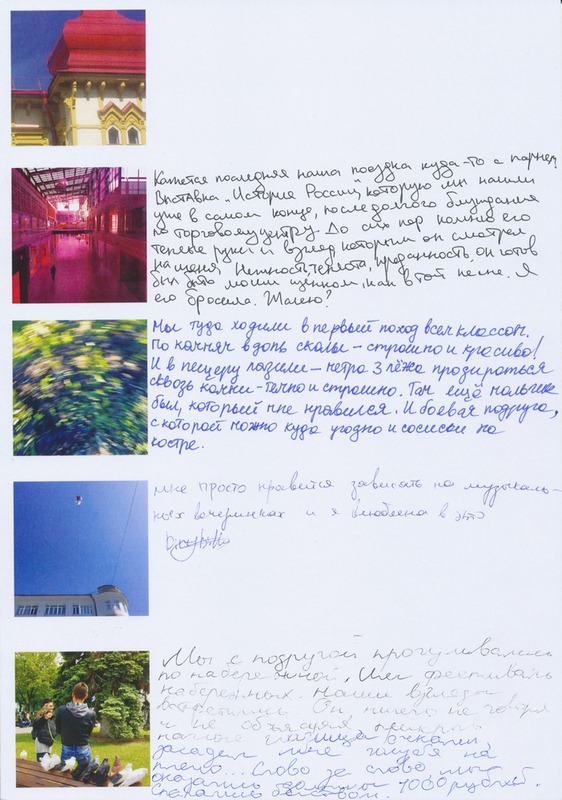
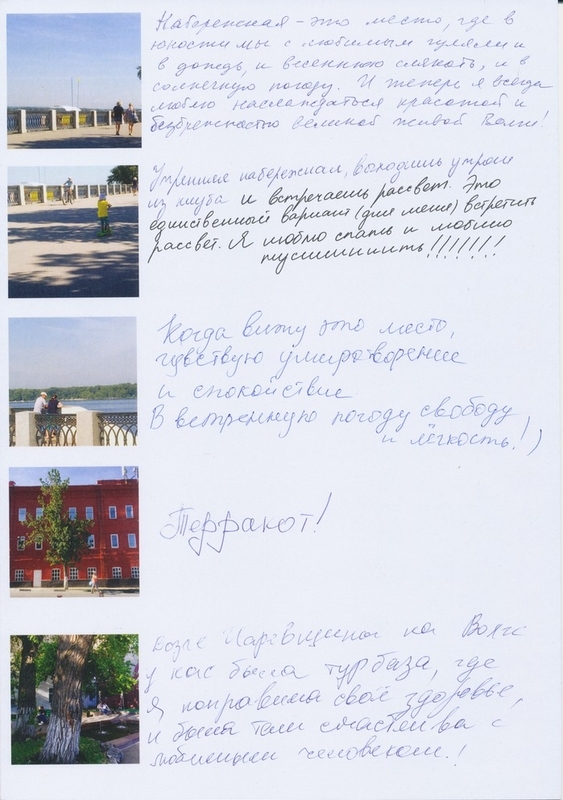
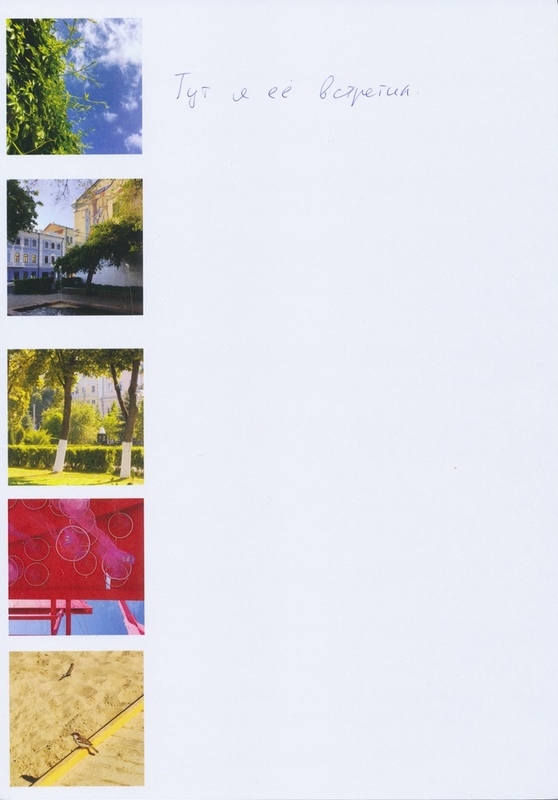
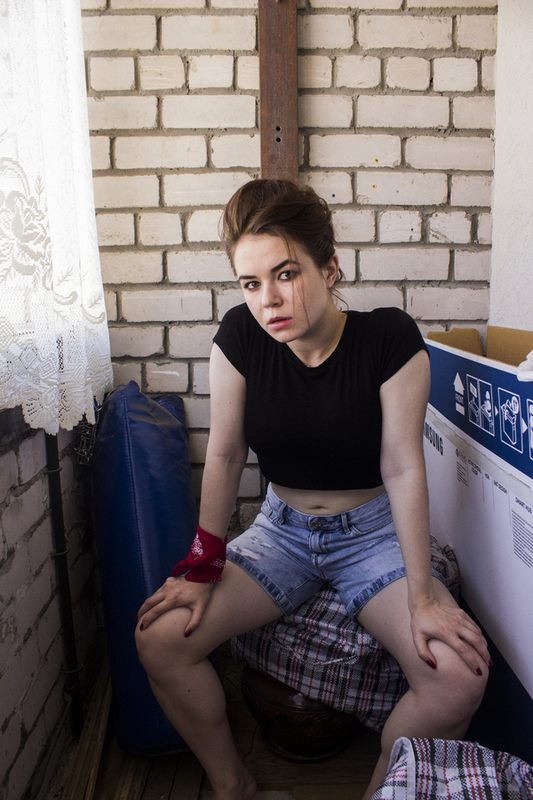
Фотография из проекта Ксении Корниловой
Фото: Ксения Корнилова
Описание проекта
«В подростковом возрасте MTV был моим любимым каналом. Я узнавала песни по их вступлению и каждое утро просыпалась под музыку.
Исполнители казались яркими, свободными и нереальными. Подражая им, я красила волосы в розовый, одевалась во все чёрное, завешивала комнату плакатами. Из-за этого чувствовала непонимание родителей. Моя мама была бухгалтером, папа — мостостроителем, я — обычной школьницей, которая понимала, что девчонка из Орска никогда не сможет добиться признания.
Сейчас мне 20 — это возраст, в котором мои кумиры уже были популярны. А что, если бы я выглядела как они?»
Описание проекта
«В подростковом возрасте MTV был моим любимым каналом. Я узнавала песни по их вступлению и каждое утро просыпалась под музыку.
Исполнители казались яркими, свободными и нереальными. Подражая им, я красила волосы в розовый, одевалась во все чёрное, завешивала комнату плакатами. Из-за этого чувствовала непонимание родителей. Моя мама была бухгалтером, папа — мостостроителем, я — обычной школьницей, которая понимала, что девчонка из Орска никогда не сможет добиться признания.
Сейчас мне 20 — это возраст, в котором мои кумиры уже были популярны. А что, если бы я выглядела как они?»
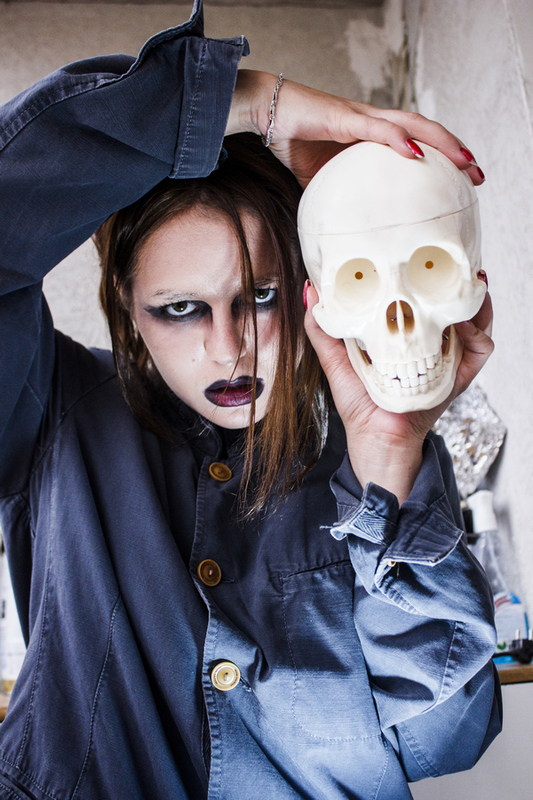
Фотография из проекта Ксении Корниловой
Фото: Ксения Корнилова
Описание проекта
«В подростковом возрасте MTV был моим любимым каналом. Я узнавала песни по их вступлению и каждое утро просыпалась под музыку.
Исполнители казались яркими, свободными и нереальными. Подражая им, я красила волосы в розовый, одевалась во все чёрное, завешивала комнату плакатами. Из-за этого чувствовала непонимание родителей. Моя мама была бухгалтером, папа — мостостроителем, я — обычной школьницей, которая понимала, что девчонка из Орска никогда не сможет добиться признания.
Сейчас мне 20 — это возраст, в котором мои кумиры уже были популярны. А что, если бы я выглядела как они?»
Описание проекта
«В подростковом возрасте MTV был моим любимым каналом. Я узнавала песни по их вступлению и каждое утро просыпалась под музыку.
Исполнители казались яркими, свободными и нереальными. Подражая им, я красила волосы в розовый, одевалась во все чёрное, завешивала комнату плакатами. Из-за этого чувствовала непонимание родителей. Моя мама была бухгалтером, папа — мостостроителем, я — обычной школьницей, которая понимала, что девчонка из Орска никогда не сможет добиться признания.
Сейчас мне 20 — это возраст, в котором мои кумиры уже были популярны. А что, если бы я выглядела как они?»
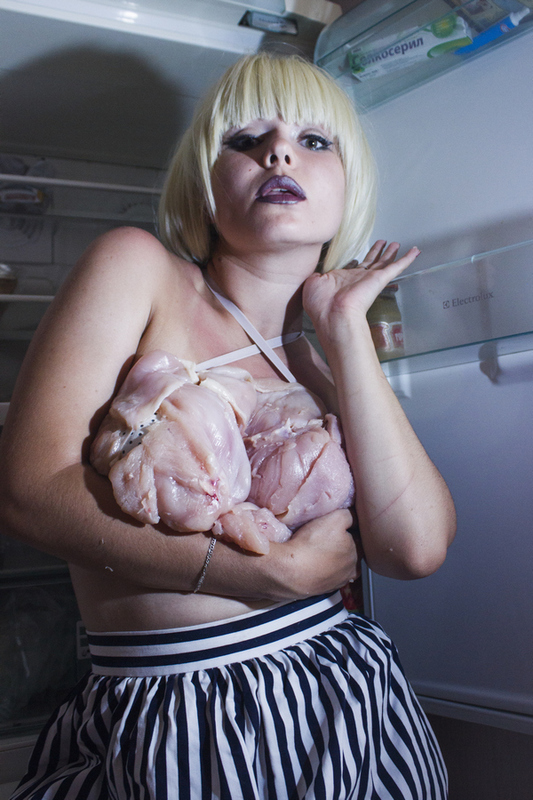
Фотография из проекта Ксении Корниловой
Фото: Ксения Корнилова
Описание проекта
«В подростковом возрасте MTV был моим любимым каналом. Я узнавала песни по их вступлению и каждое утро просыпалась под музыку.
Исполнители казались яркими, свободными и нереальными. Подражая им, я красила волосы в розовый, одевалась во все чёрное, завешивала комнату плакатами. Из-за этого чувствовала непонимание родителей. Моя мама была бухгалтером, папа — мостостроителем, я — обычной школьницей, которая понимала, что девчонка из Орска никогда не сможет добиться признания.
Сейчас мне 20 — это возраст, в котором мои кумиры уже были популярны. А что, если бы я выглядела как они?»
Описание проекта
«В подростковом возрасте MTV был моим любимым каналом. Я узнавала песни по их вступлению и каждое утро просыпалась под музыку.
Исполнители казались яркими, свободными и нереальными. Подражая им, я красила волосы в розовый, одевалась во все чёрное, завешивала комнату плакатами. Из-за этого чувствовала непонимание родителей. Моя мама была бухгалтером, папа — мостостроителем, я — обычной школьницей, которая понимала, что девчонка из Орска никогда не сможет добиться признания.
Сейчас мне 20 — это возраст, в котором мои кумиры уже были популярны. А что, если бы я выглядела как они?»
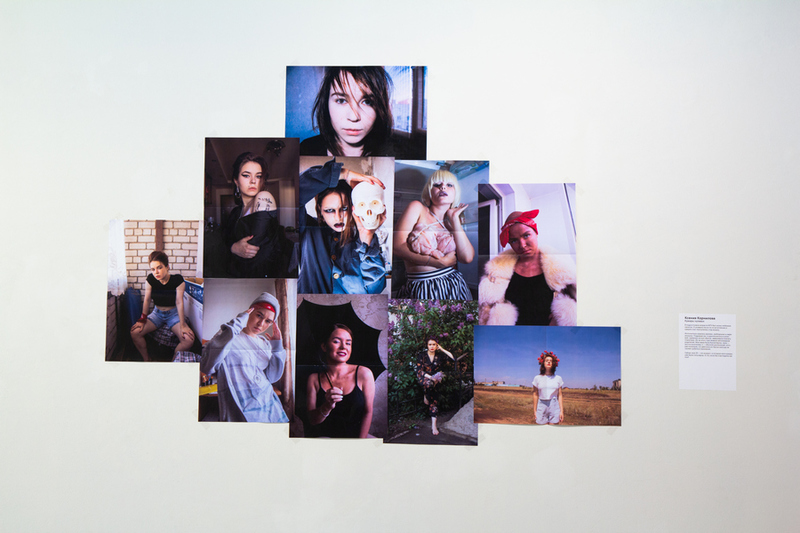
Проект Ксении Корниловой
Выставка «Новые художники», галерея Виктория (Самара), август 2018 года
Фото: Кристина Сырчикова
Описание проекта
«В подростковом возрасте MTV был моим любимым каналом. Я узнавала песни по их вступлению и каждое утро просыпалась под музыку.
Исполнители казались яркими, свободными и нереальными. Подражая им, я красила волосы в розовый, одевалась во все чёрное, завешивала комнату плакатами. Из-за этого чувствовала непонимание родителей. Моя мама была бухгалтером, папа — мостостроителем, я — обычной школьницей, которая понимала, что девчонка из Орска никогда не сможет добиться признания.
Сейчас мне 20 — это возраст, в котором мои кумиры уже были популярны. А что, если бы я выглядела как они?»
Фото: Кристина Сырчикова
Описание проекта
«В подростковом возрасте MTV был моим любимым каналом. Я узнавала песни по их вступлению и каждое утро просыпалась под музыку.
Исполнители казались яркими, свободными и нереальными. Подражая им, я красила волосы в розовый, одевалась во все чёрное, завешивала комнату плакатами. Из-за этого чувствовала непонимание родителей. Моя мама была бухгалтером, папа — мостостроителем, я — обычной школьницей, которая понимала, что девчонка из Орска никогда не сможет добиться признания.
Сейчас мне 20 — это возраст, в котором мои кумиры уже были популярны. А что, если бы я выглядела как они?»
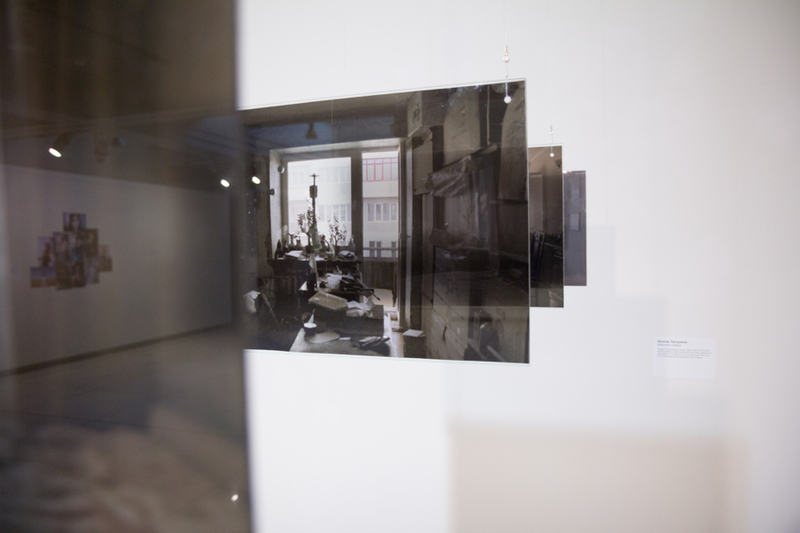
Проект Арины Лапшиной
Выставка «Новые художники», галерея Виктория (Самара), август 2018 года
Фото: Кристина Сырчикова
Описание проекта:
«Самара тянется вдоль реки. Здесь ценится жилье с видом на Волгу. При строительстве новых зданий не учитываются интересы тех, кто уже видит Волгу из окна. Новые дома перекрывают вид старым».
Фото: Кристина Сырчикова
Описание проекта:
«Самара тянется вдоль реки. Здесь ценится жилье с видом на Волгу. При строительстве новых зданий не учитываются интересы тех, кто уже видит Волгу из окна. Новые дома перекрывают вид старым».
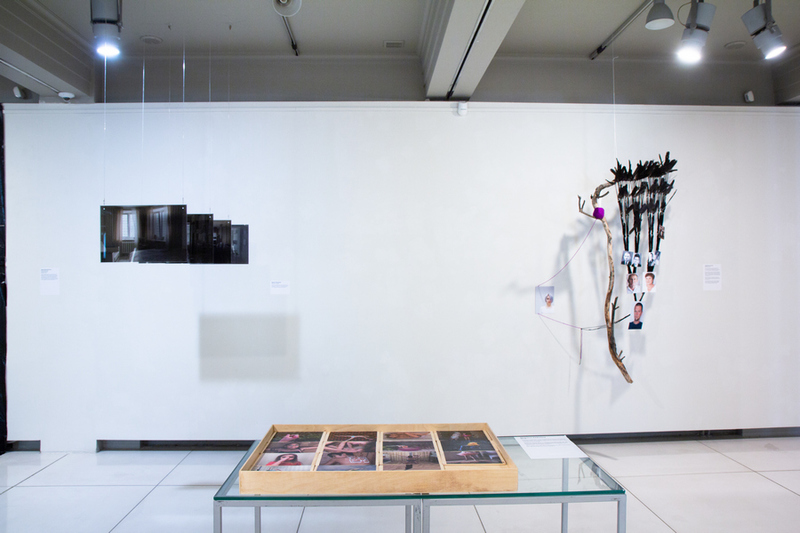
Выставка «Новые художники», галерея Виктория (Самара), август 2018 года
Фото: Кристина Сырчикова
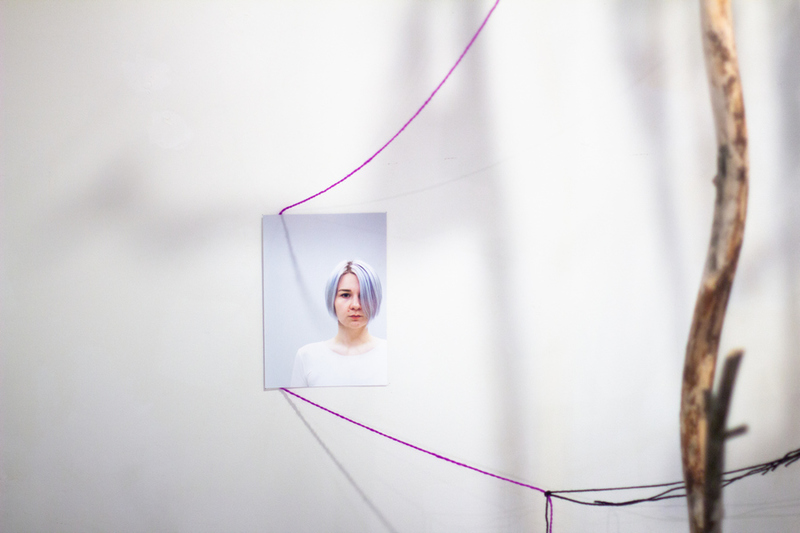
Проект Catherine du Pri
Выставка «Новые художники», галерея Виктория (Самара), август 2018 года
Фото: Кристина Сырчикова
Описание проекта:
«Человеческая память устроена фрагментарно: что-то мы помним из жизненного опыта; что-то — из семейных историй, которыми богат каждый род; что-то — из культуры, к которой принадлежим.
Фиксация памяти и поиск своего места в каждом из вышеописанных фрагментов — вопросы, которыми я задаюсь несколько лет. Взрослея, всё больше понимаю, что я лишена семейного пласта истории: родителям нечего мне рассказать, а альбомов и архивов, к сожалению, нет.
Поэтому, в попытке „вспомнить“ то, связи с чем лишена, я опираюсь на мифологию, художественные представления о роде и декоративно-прикладное искусство.
Я иду тропой шамана, жреца и мистика, создавая физическое родовое древо с плодами-людьми. Кого-то я знаю и могу обозначить фотографией, а кто-то, увы, безымянный узелок с пером»
Фото: Кристина Сырчикова
Описание проекта:
«Человеческая память устроена фрагментарно: что-то мы помним из жизненного опыта; что-то — из семейных историй, которыми богат каждый род; что-то — из культуры, к которой принадлежим.
Фиксация памяти и поиск своего места в каждом из вышеописанных фрагментов — вопросы, которыми я задаюсь несколько лет. Взрослея, всё больше понимаю, что я лишена семейного пласта истории: родителям нечего мне рассказать, а альбомов и архивов, к сожалению, нет.
Поэтому, в попытке „вспомнить“ то, связи с чем лишена, я опираюсь на мифологию, художественные представления о роде и декоративно-прикладное искусство.
Я иду тропой шамана, жреца и мистика, создавая физическое родовое древо с плодами-людьми. Кого-то я знаю и могу обозначить фотографией, а кто-то, увы, безымянный узелок с пером»

Проект Catherine du Pri
Выставка «Новые художники», галерея Виктория (Самара), август 2018 года
Фото: Кристина Сырчикова
Описание проекта:
«Человеческая память устроена фрагментарно: что-то мы помним из жизненного опыта; что-то — из семейных историй, которыми богат каждый род; что-то — из культуры, к которой принадлежим.
Фиксация памяти и поиск своего места в каждом из вышеописанных фрагментов — вопросы, которыми я задаюсь несколько лет. Взрослея, всё больше понимаю, что я лишена семейного пласта истории: родителям нечего мне рассказать, а альбомов и архивов, к сожалению, нет.
Поэтому, в попытке „вспомнить“ то, связи с чем лишена, я опираюсь на мифологию, художественные представления о роде и декоративно-прикладное искусство.
Я иду тропой шамана, жреца и мистика, создавая физическое родовое древо с плодами-людьми. Кого-то я знаю и могу обозначить фотографией, а кто-то, увы, безымянный узелок с пером»
Фото: Кристина Сырчикова
Описание проекта:
«Человеческая память устроена фрагментарно: что-то мы помним из жизненного опыта; что-то — из семейных историй, которыми богат каждый род; что-то — из культуры, к которой принадлежим.
Фиксация памяти и поиск своего места в каждом из вышеописанных фрагментов — вопросы, которыми я задаюсь несколько лет. Взрослея, всё больше понимаю, что я лишена семейного пласта истории: родителям нечего мне рассказать, а альбомов и архивов, к сожалению, нет.
Поэтому, в попытке „вспомнить“ то, связи с чем лишена, я опираюсь на мифологию, художественные представления о роде и декоративно-прикладное искусство.
Я иду тропой шамана, жреца и мистика, создавая физическое родовое древо с плодами-людьми. Кого-то я знаю и могу обозначить фотографией, а кто-то, увы, безымянный узелок с пером»
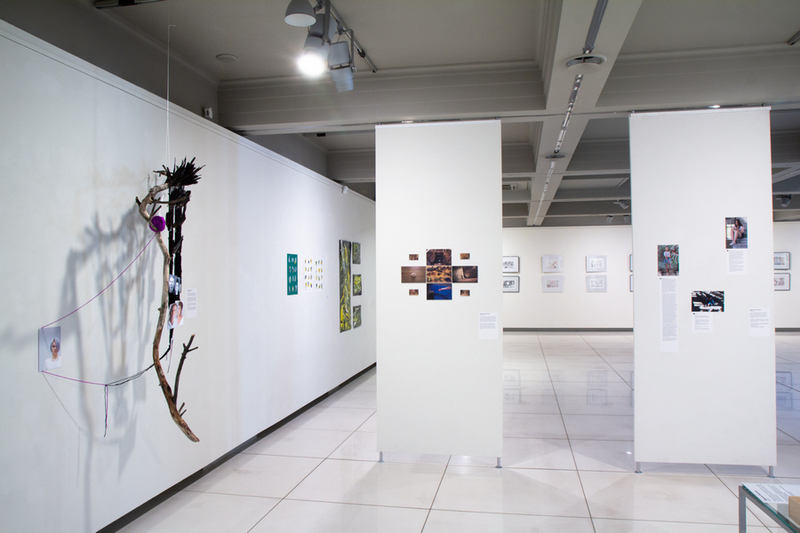
Выставка «Новые художники», галерея Виктория (Самара), август 2018 года
Фото: Кристина Сырчикова
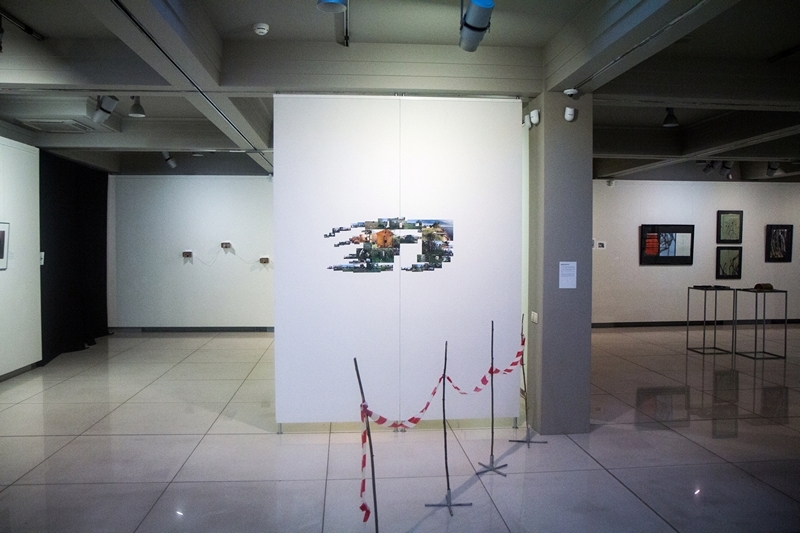
Arina Lapshina — Green island, 2017
The project is about Zelenenky (Green) island, situated on Volga river, near Samara and Samarskaya Luka National Park.
Сlimat in Samara is sharply continental. Everyone wait for summer hit trying to live as close to Volga river as possible. Country houses on the riverside are rather expensive.
The ownership of land cannot be obtained on the island. But it is allowed to live in a camp. In order to stake out the place, constructions are not disassembled at the end of the season, and partly washed away by spring flood.
Each settlement is autonomous and has its own kitchen, shower and toilet. For living in comfort islanders equip their residences: bring generators, solar batteries, gas. Despite the fact that some campers do not live there permanently, all of them know each other. If a stanger lands on the island, he is immediately asked whose guest he is.
The inhabitants of Zelenenky island realized the dream of life in nature. They settle in wild quiet peaceful places and live there for decades.
Сlimat in Samara is sharply continental. Everyone wait for summer hit trying to live as close to Volga river as possible. Country houses on the riverside are rather expensive.
The ownership of land cannot be obtained on the island. But it is allowed to live in a camp. In order to stake out the place, constructions are not disassembled at the end of the season, and partly washed away by spring flood.
Each settlement is autonomous and has its own kitchen, shower and toilet. For living in comfort islanders equip their residences: bring generators, solar batteries, gas. Despite the fact that some campers do not live there permanently, all of them know each other. If a stanger lands on the island, he is immediately asked whose guest he is.
The inhabitants of Zelenenky island realized the dream of life in nature. They settle in wild quiet peaceful places and live there for decades.
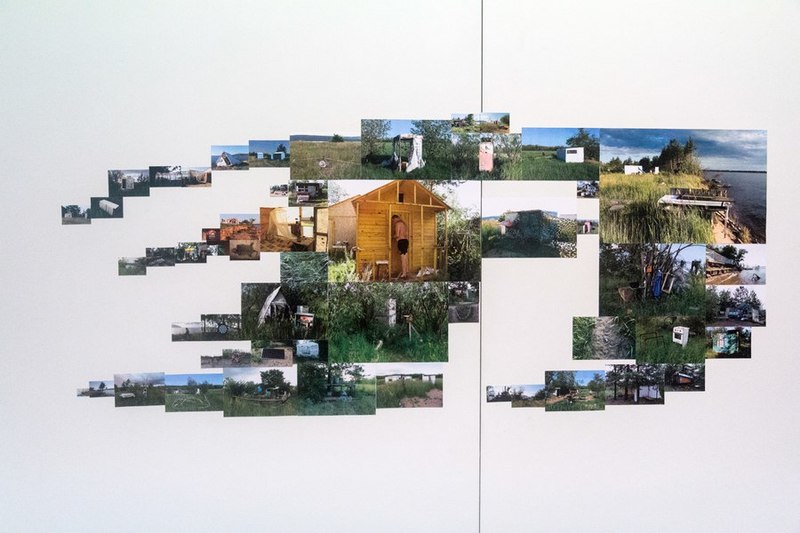
Arina Lapshina — Green island, 2017
The project is about Zelenenky (Green) island, situated on Volga river, near Samara and Samarskaya Luka National Park.
Сlimat in Samara is sharply continental. Everyone wait for summer hit trying to live as close to Volga river as possible. Country houses on the riverside are rather expensive.
The ownership of land cannot be obtained on the island. But it is allowed to live in a camp. In order to stake out the place, constructions are not disassembled at the end of the season, and partly washed away by spring flood.
Each settlement is autonomous and has its own kitchen, shower and toilet. For living in comfort islanders equip their residences: bring generators, solar batteries, gas. Despite the fact that some campers do not live there permanently, all of them know each other. If a stanger lands on the island, he is immediately asked whose guest he is.
The inhabitants of Zelenenky island realized the dream of life in nature. They settle in wild quiet peaceful places and live there for decades.
Сlimat in Samara is sharply continental. Everyone wait for summer hit trying to live as close to Volga river as possible. Country houses on the riverside are rather expensive.
The ownership of land cannot be obtained on the island. But it is allowed to live in a camp. In order to stake out the place, constructions are not disassembled at the end of the season, and partly washed away by spring flood.
Each settlement is autonomous and has its own kitchen, shower and toilet. For living in comfort islanders equip their residences: bring generators, solar batteries, gas. Despite the fact that some campers do not live there permanently, all of them know each other. If a stanger lands on the island, he is immediately asked whose guest he is.
The inhabitants of Zelenenky island realized the dream of life in nature. They settle in wild quiet peaceful places and live there for decades.
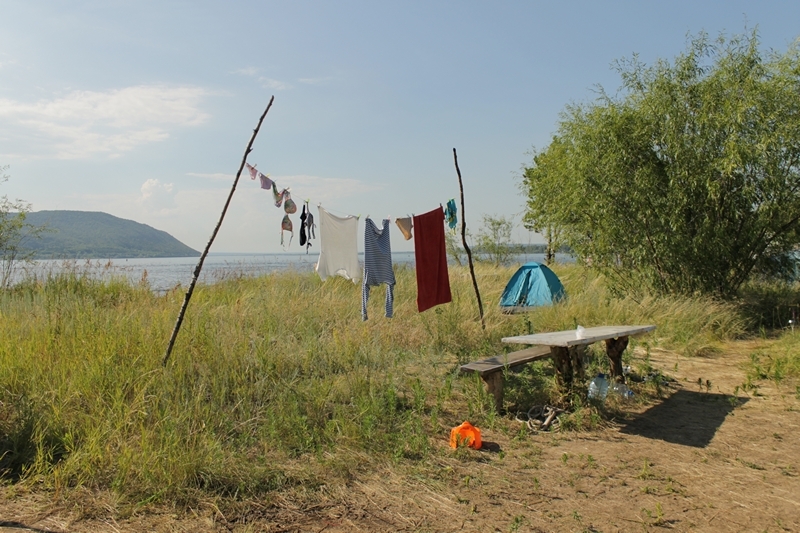
Arina Lapshina — Green island, 2017
The project is about Zelenenky (Green) island, situated on Volga river, near Samara and Samarskaya Luka National Park.
Сlimat in Samara is sharply continental. Everyone wait for summer hit trying to live as close to Volga river as possible. Country houses on the riverside are rather expensive.
The ownership of land cannot be obtained on the island. But it is allowed to live in a camp. In order to stake out the place, constructions are not disassembled at the end of the season, and partly washed away by spring flood.
Each settlement is autonomous and has its own kitchen, shower and toilet. For living in comfort islanders equip their residences: bring generators, solar batteries, gas. Despite the fact that some campers do not live there permanently, all of them know each other. If a stanger lands on the island, he is immediately asked whose guest he is.
The inhabitants of Zelenenky island realized the dream of life in nature. They settle in wild quiet peaceful places and live there for decades.
Сlimat in Samara is sharply continental. Everyone wait for summer hit trying to live as close to Volga river as possible. Country houses on the riverside are rather expensive.
The ownership of land cannot be obtained on the island. But it is allowed to live in a camp. In order to stake out the place, constructions are not disassembled at the end of the season, and partly washed away by spring flood.
Each settlement is autonomous and has its own kitchen, shower and toilet. For living in comfort islanders equip their residences: bring generators, solar batteries, gas. Despite the fact that some campers do not live there permanently, all of them know each other. If a stanger lands on the island, he is immediately asked whose guest he is.
The inhabitants of Zelenenky island realized the dream of life in nature. They settle in wild quiet peaceful places and live there for decades.
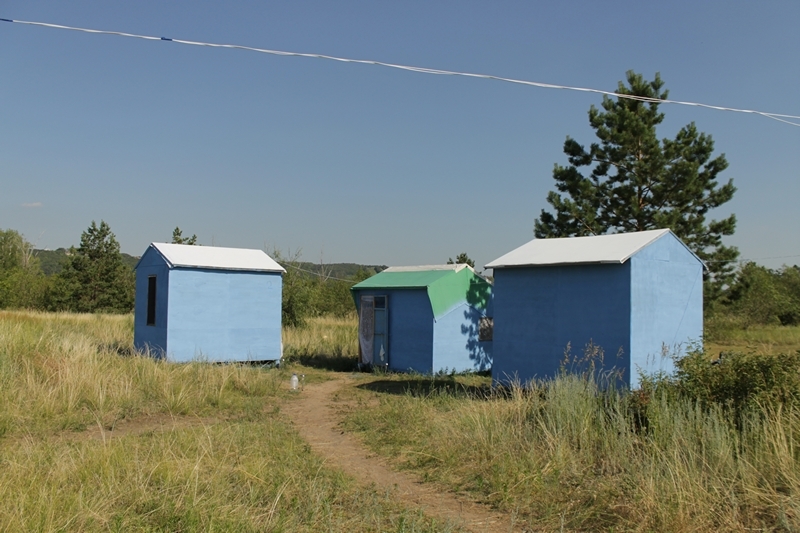
Arina Lapshina — Green island, 2017
The project is about Zelenenky (Green) island, situated on Volga river, near Samara and Samarskaya Luka National Park.
Сlimat in Samara is sharply continental. Everyone wait for summer hit trying to live as close to Volga river as possible. Country houses on the riverside are rather expensive.
The ownership of land cannot be obtained on the island. But it is allowed to live in a camp. In order to stake out the place, constructions are not disassembled at the end of the season, and partly washed away by spring flood.
Each settlement is autonomous and has its own kitchen, shower and toilet. For living in comfort islanders equip their residences: bring generators, solar batteries, gas. Despite the fact that some campers do not live there permanently, all of them know each other. If a stanger lands on the island, he is immediately asked whose guest he is.
The inhabitants of Zelenenky island realized the dream of life in nature. They settle in wild quiet peaceful places and live there for decades.
Сlimat in Samara is sharply continental. Everyone wait for summer hit trying to live as close to Volga river as possible. Country houses on the riverside are rather expensive.
The ownership of land cannot be obtained on the island. But it is allowed to live in a camp. In order to stake out the place, constructions are not disassembled at the end of the season, and partly washed away by spring flood.
Each settlement is autonomous and has its own kitchen, shower and toilet. For living in comfort islanders equip their residences: bring generators, solar batteries, gas. Despite the fact that some campers do not live there permanently, all of them know each other. If a stanger lands on the island, he is immediately asked whose guest he is.
The inhabitants of Zelenenky island realized the dream of life in nature. They settle in wild quiet peaceful places and live there for decades.
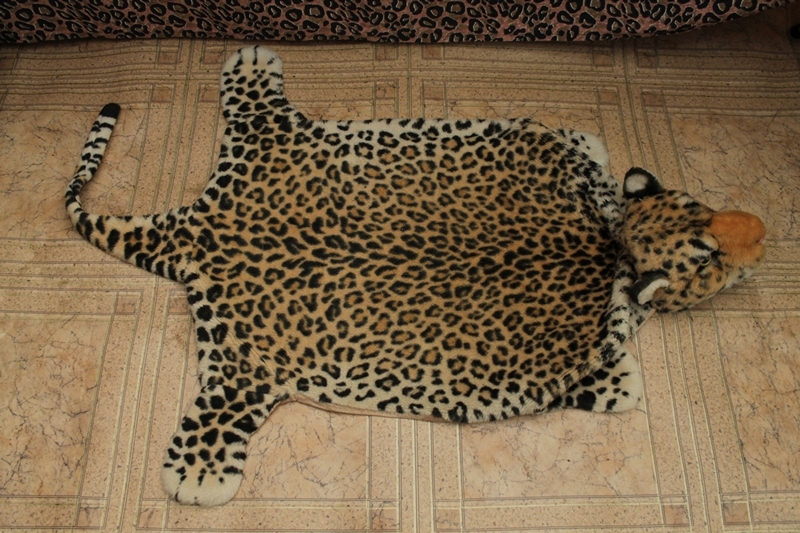
Arina Lapshina — Green island, 2017
The project is about Zelenenky (Green) island, situated on Volga river, near Samara and Samarskaya Luka National Park.
Сlimat in Samara is sharply continental. Everyone wait for summer hit trying to live as close to Volga river as possible. Country houses on the riverside are rather expensive.
The ownership of land cannot be obtained on the island. But it is allowed to live in a camp. In order to stake out the place, constructions are not disassembled at the end of the season, and partly washed away by spring flood.
Each settlement is autonomous and has its own kitchen, shower and toilet. For living in comfort islanders equip their residences: bring generators, solar batteries, gas. Despite the fact that some campers do not live there permanently, all of them know each other. If a stanger lands on the island, he is immediately asked whose guest he is.
The inhabitants of Zelenenky island realized the dream of life in nature. They settle in wild quiet peaceful places and live there for decades.
Сlimat in Samara is sharply continental. Everyone wait for summer hit trying to live as close to Volga river as possible. Country houses on the riverside are rather expensive.
The ownership of land cannot be obtained on the island. But it is allowed to live in a camp. In order to stake out the place, constructions are not disassembled at the end of the season, and partly washed away by spring flood.
Each settlement is autonomous and has its own kitchen, shower and toilet. For living in comfort islanders equip their residences: bring generators, solar batteries, gas. Despite the fact that some campers do not live there permanently, all of them know each other. If a stanger lands on the island, he is immediately asked whose guest he is.
The inhabitants of Zelenenky island realized the dream of life in nature. They settle in wild quiet peaceful places and live there for decades.
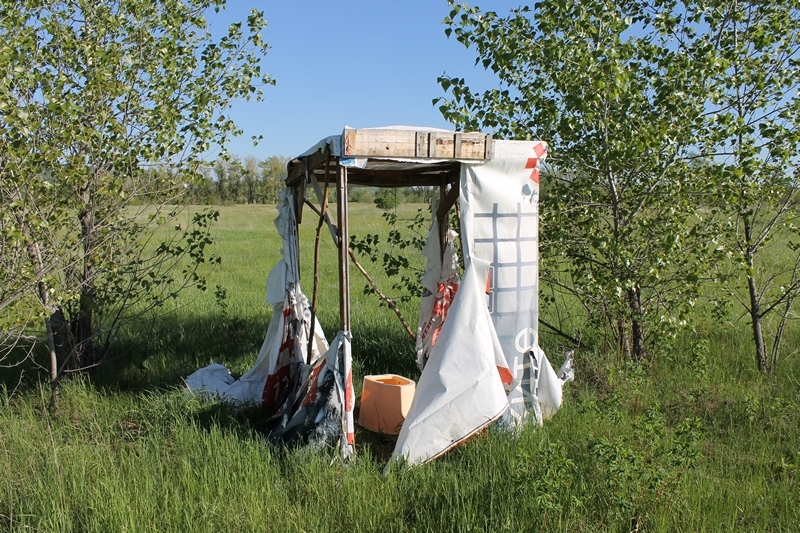
Arina Lapshina — Green island, 2017
The project is about Zelenenky (Green) island, situated on Volga river, near Samara and Samarskaya Luka National Park.
Сlimat in Samara is sharply continental. Everyone wait for summer hit trying to live as close to Volga river as possible. Country houses on the riverside are rather expensive.
The ownership of land cannot be obtained on the island. But it is allowed to live in a camp. In order to stake out the place, constructions are not disassembled at the end of the season, and partly washed away by spring flood.
Each settlement is autonomous and has its own kitchen, shower and toilet. For living in comfort islanders equip their residences: bring generators, solar batteries, gas. Despite the fact that some campers do not live there permanently, all of them know each other. If a stanger lands on the island, he is immediately asked whose guest he is.
The inhabitants of Zelenenky island realized the dream of life in nature. They settle in wild quiet peaceful places and live there for decades.
Сlimat in Samara is sharply continental. Everyone wait for summer hit trying to live as close to Volga river as possible. Country houses on the riverside are rather expensive.
The ownership of land cannot be obtained on the island. But it is allowed to live in a camp. In order to stake out the place, constructions are not disassembled at the end of the season, and partly washed away by spring flood.
Each settlement is autonomous and has its own kitchen, shower and toilet. For living in comfort islanders equip their residences: bring generators, solar batteries, gas. Despite the fact that some campers do not live there permanently, all of them know each other. If a stanger lands on the island, he is immediately asked whose guest he is.
The inhabitants of Zelenenky island realized the dream of life in nature. They settle in wild quiet peaceful places and live there for decades.
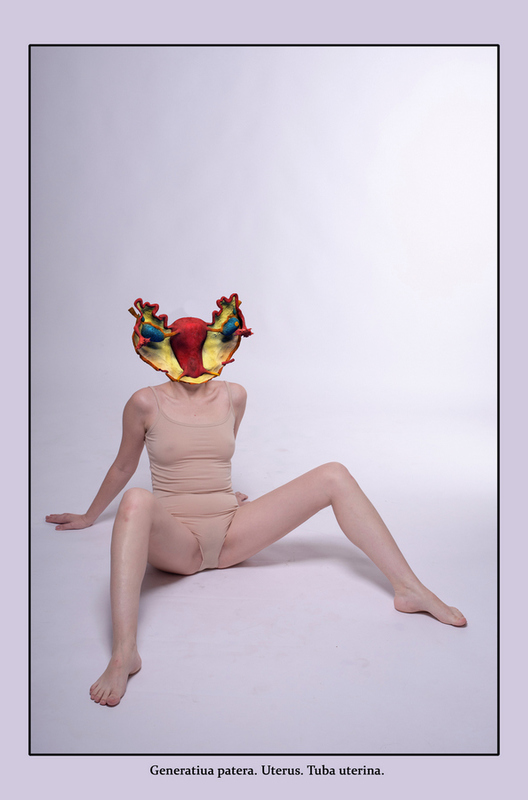
Anna Melnikova — Generatiua vas (lat. reproductive vessel), 2019
“The main thing for a woman is to give birth!” “When are you going to have a second child?” “Child-birth will treat all diseases!” More than once I heard these questions from friends.
In Russia, a woman is considered a reproductive vessel that is obliged to replenish society with new citizens. The state tries to take fertility under control by forcing to bear children: at schools lectures on contraception are prohibited, representatives of the Russian Orthodox Church propose to give unborn children all the rights, which equates abortion to murder. The media dramatizes the situation constantly affirming that the main mission of a woman is to give birth and bring up her children.
Modern Russian society puts reproductive pressure on a woman and ignores her as an individual. It does not afford an opportunity to make informed choices of motherhood.
Using the renderings of 3D models of female reproductive system, I impersonalize myself just as the patriarchal society impersonalizes a woman, imposing her a stereotypical role of a mother.
In Russia, a woman is considered a reproductive vessel that is obliged to replenish society with new citizens. The state tries to take fertility under control by forcing to bear children: at schools lectures on contraception are prohibited, representatives of the Russian Orthodox Church propose to give unborn children all the rights, which equates abortion to murder. The media dramatizes the situation constantly affirming that the main mission of a woman is to give birth and bring up her children.
Modern Russian society puts reproductive pressure on a woman and ignores her as an individual. It does not afford an opportunity to make informed choices of motherhood.
Using the renderings of 3D models of female reproductive system, I impersonalize myself just as the patriarchal society impersonalizes a woman, imposing her a stereotypical role of a mother.
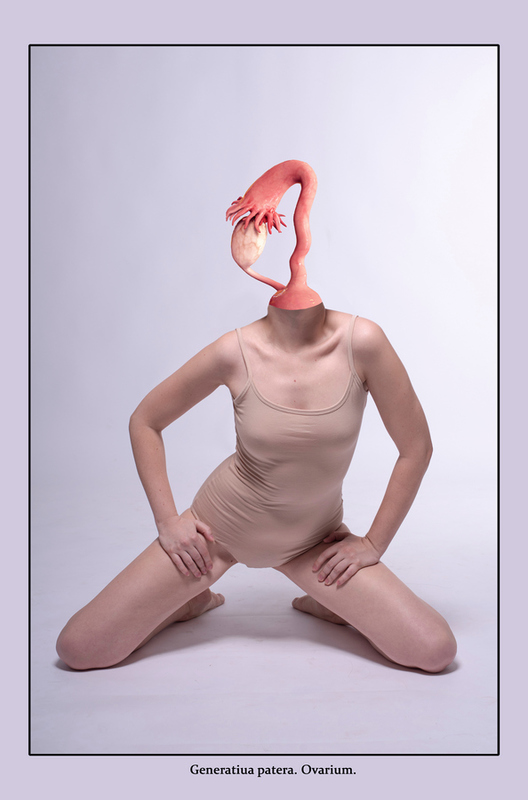
Anna Melnikova — Generatiua vas (lat. reproductive vessel), 2019
“The main thing for a woman is to give birth!” “When are you going to have a second child?” “Child-birth will treat all diseases!” More than once I heard these questions from friends.
In Russia, a woman is considered a reproductive vessel that is obliged to replenish society with new citizens. The state tries to take fertility under control by forcing to bear children: at schools lectures on contraception are prohibited, representatives of the Russian Orthodox Church propose to give unborn children all the rights, which equates abortion to murder. The media dramatizes the situation constantly affirming that the main mission of a woman is to give birth and bring up her children.
Modern Russian society puts reproductive pressure on a woman and ignores her as an individual. It does not afford an opportunity to make informed choices of motherhood.
Using the renderings of 3D models of female reproductive system, I impersonalize myself just as the patriarchal society impersonalizes a woman, imposing her a stereotypical role of a mother.
In Russia, a woman is considered a reproductive vessel that is obliged to replenish society with new citizens. The state tries to take fertility under control by forcing to bear children: at schools lectures on contraception are prohibited, representatives of the Russian Orthodox Church propose to give unborn children all the rights, which equates abortion to murder. The media dramatizes the situation constantly affirming that the main mission of a woman is to give birth and bring up her children.
Modern Russian society puts reproductive pressure on a woman and ignores her as an individual. It does not afford an opportunity to make informed choices of motherhood.
Using the renderings of 3D models of female reproductive system, I impersonalize myself just as the patriarchal society impersonalizes a woman, imposing her a stereotypical role of a mother.
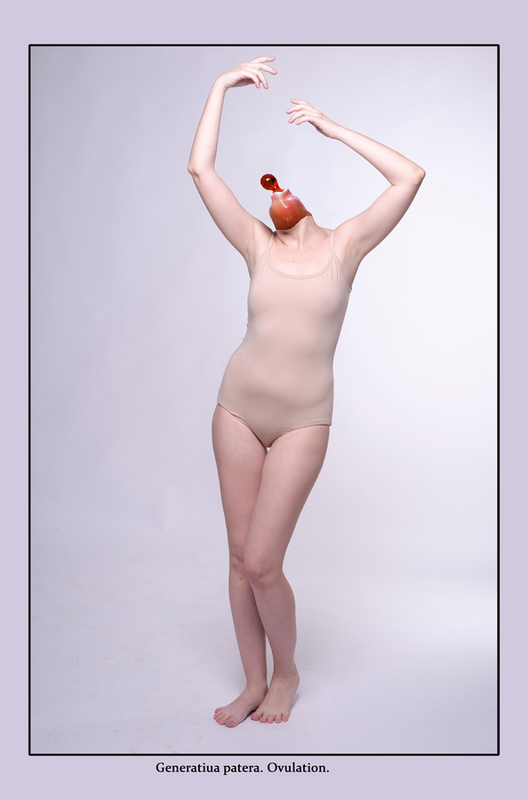
Anna Melnikova — Generatiua vas (lat. reproductive vessel), 2019
“The main thing for a woman is to give birth!” “When are you going to have a second child?” “Child-birth will treat all diseases!” More than once I heard these questions from friends.
In Russia, a woman is considered a reproductive vessel that is obliged to replenish society with new citizens. The state tries to take fertility under control by forcing to bear children: at schools lectures on contraception are prohibited, representatives of the Russian Orthodox Church propose to give unborn children all the rights, which equates abortion to murder. The media dramatizes the situation constantly affirming that the main mission of a woman is to give birth and bring up her children.
Modern Russian society puts reproductive pressure on a woman and ignores her as an individual. It does not afford an opportunity to make informed choices of motherhood.
Using the renderings of 3D models of female reproductive system, I impersonalize myself just as the patriarchal society impersonalizes a woman, imposing her a stereotypical role of a mother.
In Russia, a woman is considered a reproductive vessel that is obliged to replenish society with new citizens. The state tries to take fertility under control by forcing to bear children: at schools lectures on contraception are prohibited, representatives of the Russian Orthodox Church propose to give unborn children all the rights, which equates abortion to murder. The media dramatizes the situation constantly affirming that the main mission of a woman is to give birth and bring up her children.
Modern Russian society puts reproductive pressure on a woman and ignores her as an individual. It does not afford an opportunity to make informed choices of motherhood.
Using the renderings of 3D models of female reproductive system, I impersonalize myself just as the patriarchal society impersonalizes a woman, imposing her a stereotypical role of a mother.
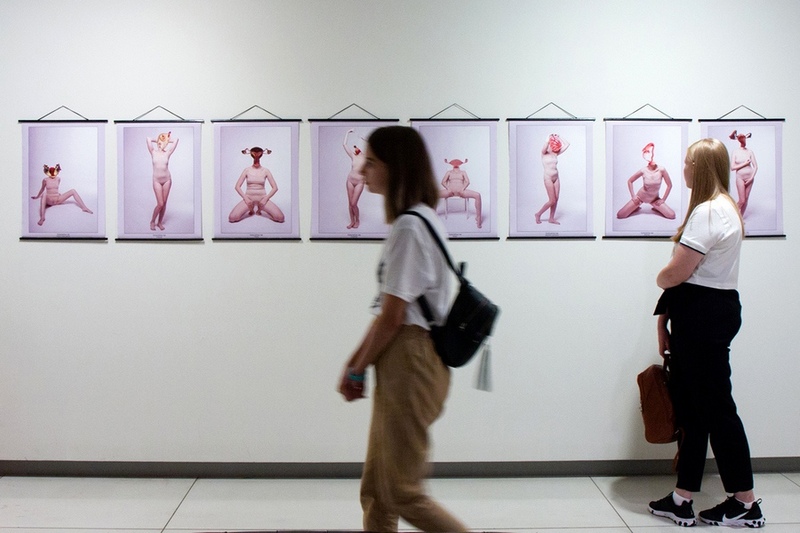
Anna Melnikova — Generatiua vas (lat. reproductive vessel), 2019
“The main thing for a woman is to give birth!” “When are you going to have a second child?” “Child-birth will treat all diseases!” More than once I heard these questions from friends.
In Russia, a woman is considered a reproductive vessel that is obliged to replenish society with new citizens. The state tries to take fertility under control by forcing to bear children: at schools lectures on contraception are prohibited, representatives of the Russian Orthodox Church propose to give unborn children all the rights, which equates abortion to murder. The media dramatizes the situation constantly affirming that the main mission of a woman is to give birth and bring up her children.
Modern Russian society puts reproductive pressure on a woman and ignores her as an individual. It does not afford an opportunity to make informed choices of motherhood.
Using the renderings of 3D models of female reproductive system, I impersonalize myself just as the patriarchal society impersonalizes a woman, imposing her a stereotypical role of a mother.
In Russia, a woman is considered a reproductive vessel that is obliged to replenish society with new citizens. The state tries to take fertility under control by forcing to bear children: at schools lectures on contraception are prohibited, representatives of the Russian Orthodox Church propose to give unborn children all the rights, which equates abortion to murder. The media dramatizes the situation constantly affirming that the main mission of a woman is to give birth and bring up her children.
Modern Russian society puts reproductive pressure on a woman and ignores her as an individual. It does not afford an opportunity to make informed choices of motherhood.
Using the renderings of 3D models of female reproductive system, I impersonalize myself just as the patriarchal society impersonalizes a woman, imposing her a stereotypical role of a mother.
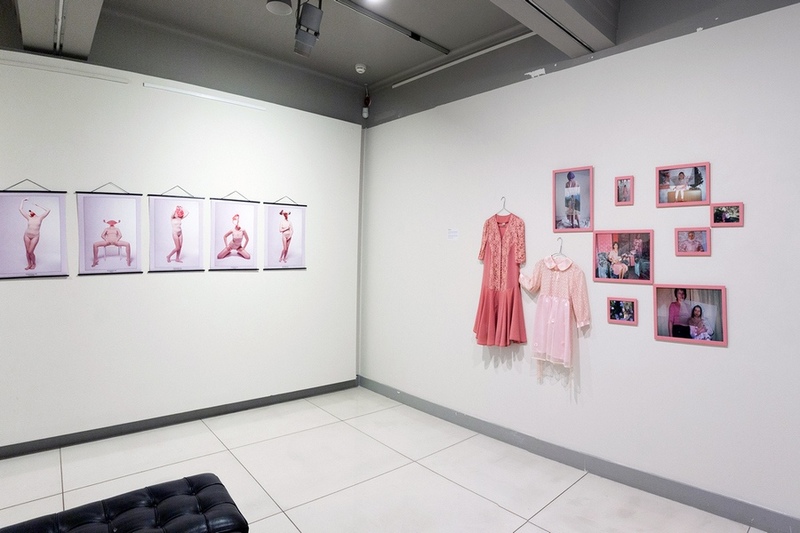
Любовь Ракшина — Несбывшееся, 2019
Моя ранняя женская социализация начиналась через розовый. Мама так любила этот цвет, что могла одеть меня целиком, вплоть до носков и заколок, в одежду всех его оттенков. Ещё она хотела, чтобы я носила платья и юбки, улыбалась всем, была удобной. В детстве я старалась соответствовать её ожиданиям, чтобы заслужить любовь.
Мамы нет уже три года. Сейчас розовый стал для меня проводником в мир мамы, помогающим легче перенести тоску о несбывшейся близости. Через этот цвет я анализирую наши детско-родительские отношения, создаю ту глубокую связь и близость, которой на самом деле не случилось.
Мамы нет уже три года. Сейчас розовый стал для меня проводником в мир мамы, помогающим легче перенести тоску о несбывшейся близости. Через этот цвет я анализирую наши детско-родительские отношения, создаю ту глубокую связь и близость, которой на самом деле не случилось.
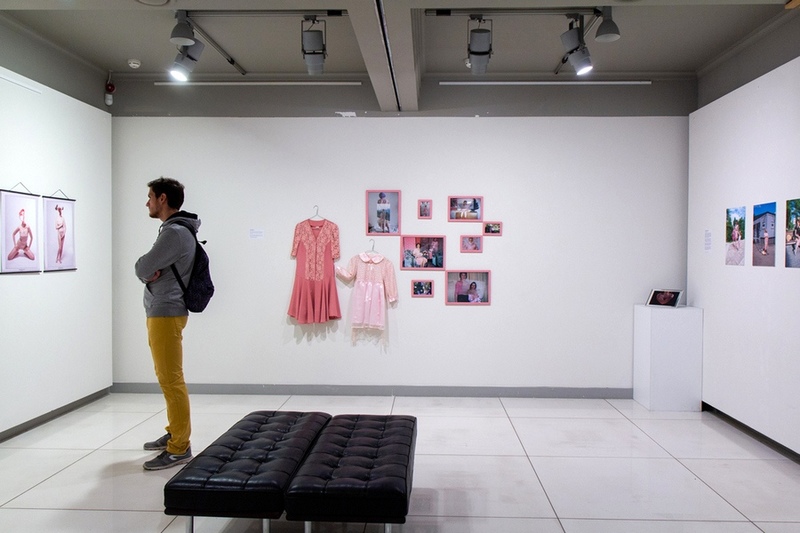
Lubov Rakshina — Unfulfilled, 2019
My socialization as a female began with pink colour. Mom loved this color so much that she could dress me from top to toe in clothes of shades of pink. She also wanted me to wear dresses and skirts, smile at everyone, and feel myself comfortable. As a child I tried to meet her expectations in order to earn love.
Mom has been gone for three years. Now pink has become for me as a guide to my mother's world, helps me to bear the longing for unfulfilled intimacy easier. I analyze our parent-child relationships through this color, create that deep connection and intimacy, which actually did not happen.
Mom has been gone for three years. Now pink has become for me as a guide to my mother's world, helps me to bear the longing for unfulfilled intimacy easier. I analyze our parent-child relationships through this color, create that deep connection and intimacy, which actually did not happen.
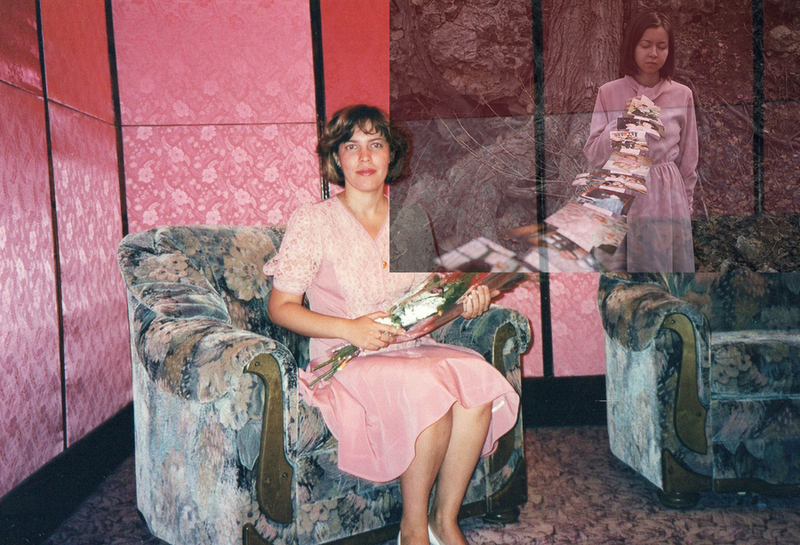
Lubov Rakshina — Unfulfilled, 2019
My socialization as a female began with pink colour. Mom loved this color so much that she could dress me from top to toe in clothes of shades of pink. She also wanted me to wear dresses and skirts, smile at everyone, and feel myself comfortable. As a child I tried to meet her expectations in order to earn love.
Mom has been gone for three years. Now pink has become for me as a guide to my mother's world, helps me to bear the longing for unfulfilled intimacy easier. I analyze our parent-child relationships through this color, create that deep connection and intimacy, which actually did not happen.
Mom has been gone for three years. Now pink has become for me as a guide to my mother's world, helps me to bear the longing for unfulfilled intimacy easier. I analyze our parent-child relationships through this color, create that deep connection and intimacy, which actually did not happen.
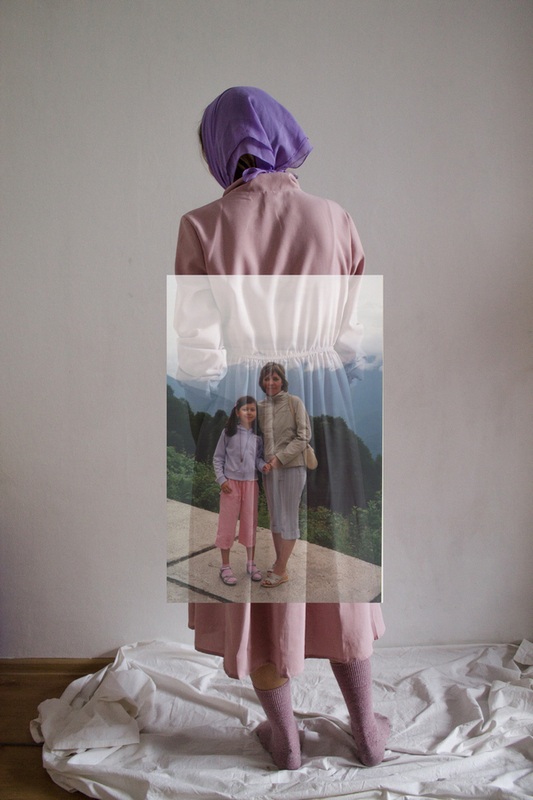
Lubov Rakshina — Unfulfilled, 2019
My socialization as a female began with pink colour. Mom loved this color so much that she could dress me from top to toe in clothes of shades of pink. She also wanted me to wear dresses and skirts, smile at everyone, and feel myself comfortable. As a child I tried to meet her expectations in order to earn love.
Mom has been gone for three years. Now pink has become for me as a guide to my mother's world, helps me to bear the longing for unfulfilled intimacy easier. I analyze our parent-child relationships through this color, create that deep connection and intimacy, which actually did not happen.
Mom has been gone for three years. Now pink has become for me as a guide to my mother's world, helps me to bear the longing for unfulfilled intimacy easier. I analyze our parent-child relationships through this color, create that deep connection and intimacy, which actually did not happen.
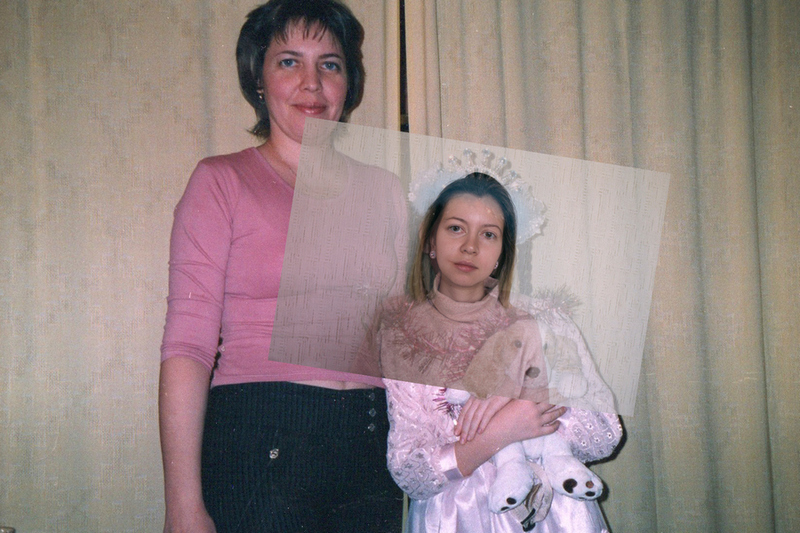
Lubov Rakshina — Unfulfilled, 2019
My socialization as a female began with pink colour. Mom loved this color so much that she could dress me from top to toe in clothes of shades of pink. She also wanted me to wear dresses and skirts, smile at everyone, and feel myself comfortable. As a child I tried to meet her expectations in order to earn love.
Mom has been gone for three years. Now pink has become for me as a guide to my mother's world, helps me to bear the longing for unfulfilled intimacy easier. I analyze our parent-child relationships through this color, create that deep connection and intimacy, which actually did not happen.
Mom has been gone for three years. Now pink has become for me as a guide to my mother's world, helps me to bear the longing for unfulfilled intimacy easier. I analyze our parent-child relationships through this color, create that deep connection and intimacy, which actually did not happen.
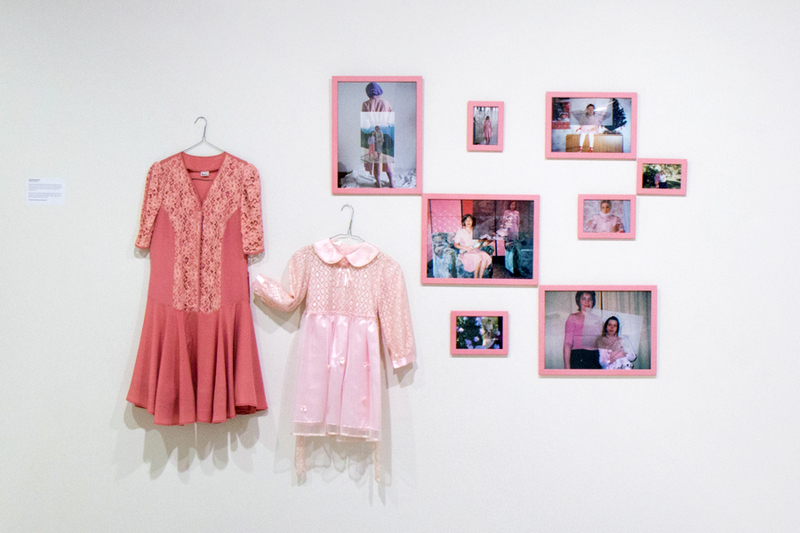
Lubov Rakshina — Unfulfilled, 2019
My socialization as a female began with pink colour. Mom loved this color so much that she could dress me from top to toe in clothes of shades of pink. She also wanted me to wear dresses and skirts, smile at everyone, and feel myself comfortable. As a child I tried to meet her expectations in order to earn love.
Mom has been gone for three years. Now pink has become for me as a guide to my mother's world, helps me to bear the longing for unfulfilled intimacy easier. I analyze our parent-child relationships through this color, create that deep connection and intimacy, which actually did not happen.
Mom has been gone for three years. Now pink has become for me as a guide to my mother's world, helps me to bear the longing for unfulfilled intimacy easier. I analyze our parent-child relationships through this color, create that deep connection and intimacy, which actually did not happen.
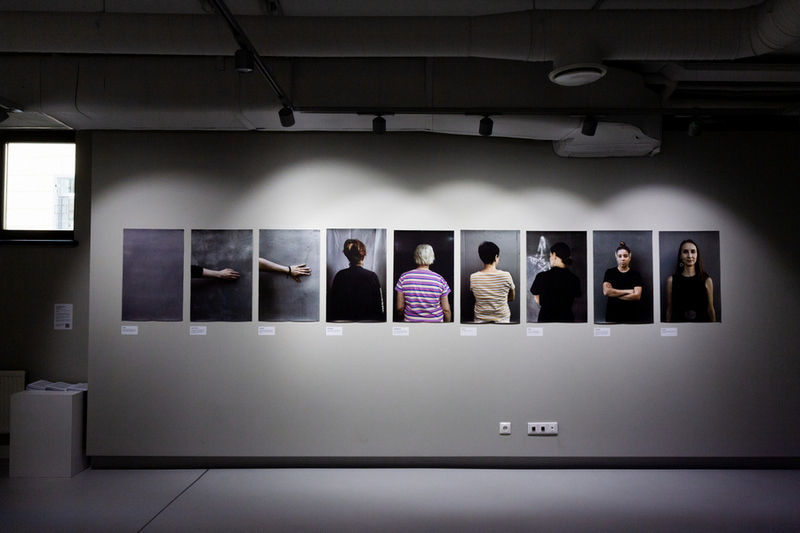
Проект Елены Сидоровой. Выставка «Новые художники», галерея Виктория (Самара), август 2020 года
Фотография Кристины Сырчиковой
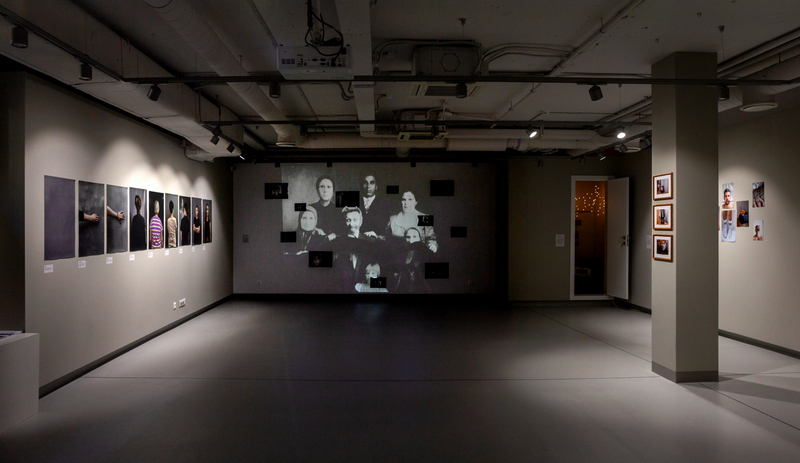
Выставка «Новые художники», галерея Виктория (Самара), август 2020 года
Фотография Кристины Сырчиковой